



The official publication of: Canada’s #1 most widely read publication for Apartment Owners, Managers and Association Executives Vol. 16 No. 2 August 2023 Sifton: 100 years of building commuities 100 Protecting your business from rent strikes Know your rights as a rental property owner and how to protect against rent strikes. Tips for centralization and automation Learn how to make your business more efficient and engage your employees. Halifax, a conference, and $1.25 Marc Côté and CFAA RHC both visit Halifax for the first time.



1.888.348.8991 www.mcintoshperry.com We’ve encountered almost every possible building-related issue. Building Science | Condition Assessments | Project Management | Structural Engineering | Geotechnical Engineering | Environmental Services | Asbestos and Mould Survey | Material Testing | Roof Surveys North America's Leading Team of Engineers, Project Managers, Technical Experts and Problem Solvers
EDITOR’S NOTES
Build faster, but do it right
Ontario needs more housing, and more affordable housing, now. But we also need to protect the Greenbelt, as you cannot replace farmland or ecologically sensitive land once it’s been paved over. We need politicians to cut red tape and the costs of getting shovels in the ground now. Within a 2-km radius of where I live, there are plans to build enough new units to house more than 100,000 people, all near an approved subway line within a serviced community. But shovels probably won’t be in the ground for another year or two. Getting those homes built faster (and others already planned) will address the housing issue, while continuing the protection of ecologically sensitive land. This issue of RHB Magazine features an overview of the 100th anniversary of Sifton Properties Limited. The company is known for developing high-quality multi-unit residential buildings, leading the way in energy efficiency, and supporting the community through its charitable foundation. Sifton is celebrating its milestone with special events, contests, video and photo recollections, charitable donations, and more.
The second article examines the increasing number of rent strikes and how the strategies have changed. It also explains rental property owners’ rights and how they can protect their business against rent strikes. The third article describes Marc Côté’s impressions of his visit to the city of Halifax, which played host to the recent CFAA Rental Housing Conference.
Don’t forget to read CFAA’s newsletter, National Outlook , as well as the Regional Association Voice. FRPO discusses the need for all levels of government to get involved in building more housing in Ontario, and invites everyone to prepare for the upcoming MAC Awards. Yardi Canada wraps up this issue with tips on improving efficiencies through centralization and automation.
We enjoy hearing from our readers, and we want to support twoway communication. If you have any comments or questions, send them to david@rentalhousingbusiness.ca. I look forward to your emails.
Publisher Marc Côté marc@rentalhousingbusiness.ca
Associate Publisher Nishant Rai
Editorial David Gargaro david@rentalhousingbusiness.ca
Contributing Editor
John Dickie, Past President, CFAA jdickie@rentalhousingbusiness.ca
Creative Director / Designer
Scott Clark
Sales Executive Justin Kreslin
Office Manager
Geeta Lokhram
Subscriptions
One year $49.99 Cdn
Two years $79.99 Cdn Single copy sales $9.99 Cdn
Opinions expressed in articles are those of the authors and do not necessarily reflect the views and opinions of the CFAA Board or management. CFAA and RHB Inc. accept no liability for information contained herein. All rights reserved. Contents may not be reproduced without the written permission from the publisher.
P.O. Box 696, Maple, ON L6A 1S7 416-236-7473
Produced in Canada
All contents copyright © RHB Inc. Canadian Publications Mail Product Sales Agreement No. 42652516
David Gargaro Senior Editor

Enjoy the issue!
4 | August 2023




www.coinamatic.com | 1.877.755.5302 | info@coinamatic.com CONTACT US! Future-proof your laundry. With the Coinamatic digital laundry room mobile app + card bundle, residents get their choice of easy-to-use mobile or laundry card payment. Mobile App + Laundry Card Bundle Learn more about our mobile and cashless bundles and other digital laundry room solutions. CP Mobile App
conference,
Marc Côté and CFAA RHC both visit Halifax for the



Sifton: 100 years of building communities


Sifton Properties Limited celebrates 100 years of developing quality multi-unit residential properties, investing in energy efficiency, and supporting charitable endeavours.
Final
Take
6 | August 2023 47 Regional Association Voice RHB’s forum for rental housing associations to share news, events and industry information The Member Associations Hot Topics: HDAA provides an update on the City of Hamilton's Rental Licensing pilot project, the encampment protocol, and upcoming housing developments. pg. 49 LPMA unveils the speakers and topics for upcoming meetings and describes Ontario's proposed legislation to discourage "renovictions." pg. 53 EOLO provides updates on the City of Ottawa's solid waste policies and the Vacant Unit Tax. pg. 57 SKLA discusses recent events, including the Annual General Meeting and CFAA Rental Housing Conference, as well as the association's advocacy efforts. pg. 61
rent strikes
Protecting your business from
Know your rights as a rental property owner and how to protect against rent strikes. Away
Tips for centralization and automation
Halifax, a
Learn how to make your business more efficient and engage your employees. and $1.25
RAV features the latest industry news from four member associations.
first time.
VOL.16 NO.2 2023 64 30
CONTENTS






ASPHALT PAVING CONCRETE PAVING SITE servicing LANDSCAPE CONSTRUCTION BUILDING RESTORATION service@forestgroup.ca 416.524.3000 24 HOUR EMERGENCY SERVICE forestgroup.ca DIVERSIFIED CONSTRUCTION
PRESIDENT’S CORNER
A message from the CFAA Board
When founded in 1995, the Canadian Federation of Apartment Associations (“CFAA”) embarked on a mission to represent the national interests and rights of Canadian rental housing providers to the Federal Government. Many people have contributed their support to CFAA and its mission over the years.
John Dickie steps down as CFAA President
In particular, in 2004, the CFAA Board asked John Dickie to become the CFAA President, and he agreed. Now after 19 years, John has stepped down as President. Over those 19 years, John has worked tirelessly to advance CFAA and its mission.
Under John’s leadership, CFAA dramatically expanded its government relations work with key government decision-makers, enhanced communication and collaboration with CFAA member associations, and increased membership and sponsorship to support CFAA in achieving its goals for the rental housing industry.
As John steps down, we thank him for his dedication and commitment to CFAA.
CFAA’s welcome to Tony Irwin
Stepping into John’s role as CFAA President on an interim basis is Tony Irwin. Tony is currently the President & CEO of the Federation of Rentalhousing Providers of Ontario (“FRPO”). Since his appointment to that position in 2018, Tony has advocated for the rental industry at the Ontario provincial government, and worked closely with John and CFAA on the federal lobbying.
With both governments, the goal has been policies that encourage and prioritize the building of more purpose-built rental housing, improve the operating climate for rental housing providers, and ensure that vacancy decontrol is preserved, so that landlords and new tenants can agree to a market rent on unit turnover.
Prior to joining FRPO, Tony was the President & CEO of the Canadian Consumer Finance Association. Tony’s background in politics and government relations dates back to the late 1990’s.
Today, as the Federal Government’s focus on the rental housing industry sharpens, the CFAA Board looks forward to Tony advancing CFAA’s mission, improving on its outreach and brand recognition, and building on the foundations diligently laid by John.
Please join me in welcoming Tony Irwin as the Interim President of CFAA.
The current federal and CFAA issues
More details about the current federal issues can be found at pages 35 to 38. Pages 39 and 40 provide thanks to the sponsors of, and speakers at, CFAA – Rental Housing Conference 2023, which took place in Halifax. For the companies which won in the CFAA Rental Housing Awards, see page 41. For information about CFAA – Rental Housing Conference 2024, and the 2023 Employee Compensation Survey, see the ads at page 60.
Success for the rental housing industry
Success for the rental housing industry depends on the industry being well and strongly represented in a coordinated way at the national level. The strength of CFAA’s continued advocacy depends largely on the continued support of our members. John, Tony and the CFAA Board join in asking you for that support!
CFAA began as a federation of associations, and remained that for many years. However, over the last few years, CFAA has gained considerable strength through the support of direct members. If your company is not already a direct member of CFAA, please join CFAA as a Direct Rental Housing Provider Member, or a Suppliers Council Member. Visit www.cfaa-fcapi.org or-mail admin@cfaafcapi.org today!
Krish Vadivale CFAA Board Chair
8 | August 2023

In this issue of... NATIONAL OUTLOOK
35. What are the two main conflicting views of the reasons for the current housing crisis? What has CFAA said at the House of Commons HUMA Committee? What is the next stage in federal housing policy determination?
Corporation des Propriétaires Immobiliers du Québec (CORPIQ) www.corpiq.com
P: 514-748-1921
Eastern Ontario Landlord Organization (EOLO) www.eolo.ca
P: 613-235-9792
Federation of Rental-housing Providers of Ontario (FRPO) www.frpo.org
P: 416-385-1100, 1-877-688-1960
Greater Toronto Apartment Association (GTAA) www.gtaaonline.com
P: 416-385-3435
40. Who spoke at CFAA Rental Housing conference 2023? What companies are they from?

Hamilton & District Apartment Association (HDAA) www.hamiltonapartmentassociation.ca
P: 905-632-4435
Investment Property Owners Association of Nova Scotia (IPOANS) www.ipoans.ns.ca
P: 902-425-3572
LandlordBC www.landlordbc.ca
P: 1-604-733-9440
Vancouver Office P: 604-733-9440
Victoria Office P: 250-382-6324
41. Which rental companies and rental suppliers won awards in the 2023 CFAA Rental Housing Awards program? Where can you find a full list of the winners, both people and companies, along with the category they won?

To subscribe to CFAA’s e-Newsletter, please send your email address to communication@cfaa-fcapi.org.
The Canadian Federation of Apartment Associations represents the owners and managers of close to 1.5 million residential rental suites in Canada, through 13 apartment associations and direct landlord memberships across Canada.
CFAA is the sole national organization representing the interests of Canada’s $950 billion rental housing industry.
For more information about CFAA itself, see www.cfaa-fcapi.org or telephone 613-235-0101.
London Property Management Association (LPMA) www.lpma.ca
P: 519-672-6999
New Brunswick Apartment Owners Association (NBAOA) www.nbaoa.ca
jbrealsetate@nb.aibn.com
Manufactured Home Park Owners Alliance of British Columbia (MHPOA) www.mhpo.com
P: 1-877-222-4560
Professional Property Managers’ Association (of Manitoba) (PPMA) www.ppmamanitoba.com

P: 204-957-1224
Saskatchewan Landlord Association Inc. (SKLA) www.skla.ca
P: 306-653-7149
Waterloo Regional Apartment Management Association (WRAMA) www.wrama.com
P: 519-748-0703
10 | August 2023
CFAA Member Associations

Luxer One Contactless Parcel Delivery Lockers 100% of packages accepted in every size and shape Smart technology & design for easy-to-use experience Unparalleled service, support teams available 24/7 for carriers, residents and communities Indoor - Outdoor and refrigerated models available Multiple revenue opportunities 99.9% uptime guaranteed Why do property owners and managers prefer Luxer One? Luxer One and Coinamatic have partnered together to provide over 15 years of experience in multifamily lockers as well as over 75 years of experience operating and serving this multi-family industry. We strive to provide the best product, delivery and installation experience, and user experience to building residents, carriers and property managers alike! Contact us today at 1-877-755-5302 or info@coinamatic.com for more information PARTNE R REGISTERED
Turnover Rates in Western Canada

source: 2023 National Edition theAnnual 1
2 Saskatoon,
3
4 Calgary,
5 Kelowna,
6 Winnipeg,
Regina, SK - 34.5%
SK - 33.1%
Edmonton, AB - 30.4%
AB - 27.9%
BC - 23.1%
MB - 19.2%












HSBUILD.COM HVAC HVAC Hardware Building Plumbing Electrical Safety Seasonal Discover Top-Notch Maintenance Products for Your Multi-Unit Residential Space! Choose H&S Building Supplies Ltd. as your ultimate source for high-quality building maintenance products. Specializing in the multi-unit residential sector, we take pride in providing an extensive range of top-tier products, competitive prices, exceptional customer service, and on-time delivery. With a daily inventory of over 14,000 items, we have exactly what you need to keep your property in pristine condition. Contact us today for all your maintenance supply needs! WWW.HSBUILD.COM 96 Maplecrete Road, Concord, ON L4K 1A4 • sales@hsbuild.com • 1.800.207.8325 Elevate Your Building Maintenance with H&S Building Supplies – Your Reliable Source! ANNIVERSARY 1993-2023 CELEBRATING COMMERCIAL • MULTI-UNIT • RESIDENTIAL • INDUSTRIAL • INSTITUTIONAL
By David Gargaro
Sifton: 100 building communities

There aren’t many companies in Canada that can boast they’ve been around for 100 years. It’s a rare achievement, which makes it a great reason to celebrate.

That’s just what Sifton Properties Limited is doing, and doing in style. The company is celebrating its 100th anniversary in 2023 through its 100 Steps Forward campaign. Sifton is promoting the milestone with special events, contests, video and photo recollections, charitable donations, and much more.
“Celebrating a 100th anniversary as an organization is a big achievement, one that the Sifton family is honoured to realize,” said Richard Sifton, President and CEO. “Not only are we filled with gratitude for the opportunities that helped us reach this milestone, we look back in awe on the journey we’ve taken as a family company. That family includes every employee, partner and customer that has played a part in shaping our goals and realizing our dreams.”
14 | August 2023
years of communities


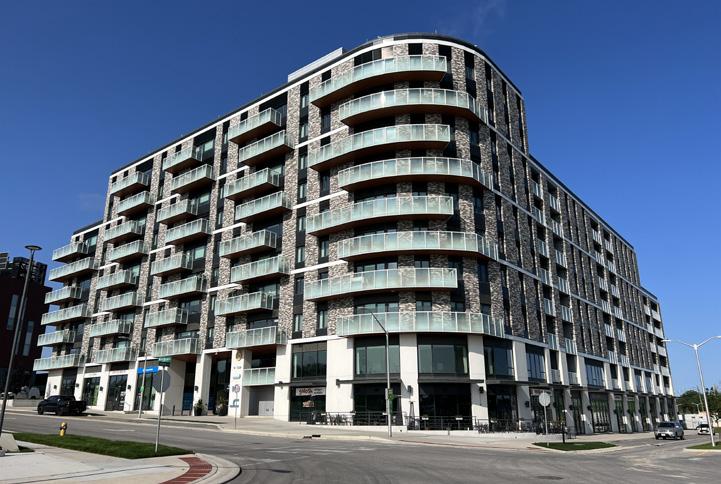


Looking back
Harry Sifton grew up on a family farm in Palmyra, Ontario. He later moved to London to get into building homes. In 1923, he started Sifton Construction Company and built his first homes on Rosedale Avenue. The response to the development was so positive that he sold the homes before they were completed, which was unusual for the time.
Harry followed up this first step into home building with a unique idea. He decided to create speculative (spec) homes, which had never been done before in Southwestern Ontario. It was such a novel strategy because he had to raise capital to build the house before someone would be interested enough to purchase it.
This decision coincided with the arrival of the Great Depression, which severely limited the availability of cash flow for his business. However, Harry had created a niche for Sifton Construction. He turned this challenge into an opportunity by renting already built spec homes to create a regular stream of income.

“That’s how he started into the thought process of residential rentals,” said Richard. “We would still make some cash flow and still be able to service the customer.”
The Great Depression taught people to be more resilient in the face of difficult times. Harry learned this lesson well, in one case accepting a grandfather clock as partial payment for outstanding rent. This type of gesture enabled him to best serve his community and accommodate customers who were in financial need.
“That grandfather clock was in our head office in downtown London, and it’s now in our head office at West 5,” said Richard. “It’s a great symbol of how we have evolved and how we are continuing to remember where Harry has brought us today.”
Growth and diversification
In 1946, following the end of World War II, Harry’s son Mowbray joined him in the family business. Three years later, Sifton took a large step from being home builders to developers. The company purchased a plot of land just outside London, upon which they built their first large development: a subdivision of 57 single-family homes on Braemar Crescent. It was a much more involved process than previous projects, as it required getting approvals from the township, installing streets for the development, and then building the houses for sale to the eventual buyers.
One year later, Sifton moved further west and began construction of Oakridge Park, one of the first planned communities in Canada. The development spanned 74 acres and included more than 1,600 housing units. The community was built with all the features and amenities it would have today, including buried electrical wiring, street lighting, and curbs with gutters. It was facilitated by the first publicly developed public sewage treatment plant, which is currently known as the Oxford Street Pollution Plant.
Almost 20 years later, in 1970, Sifton built its most diverse community in Westmount. The development consisted of Westmount Shopping Centre, single-family homes, apartment complexes, community amenities, and office buildings. Even though the community is over 50 years old, within the last decade, Westmount won an award for the best streetscape in a multi-family project.
This was also around the time when Mowbray introduced the “Sifton brick” to the world. The brick is included in every Sifton home and building, serving as a symbol of the company’s commitment to quality.
“My father was very open to new ideas, and in that way he managed to keep the company ahead of the curve, being an innovator and a leader in the industry,” said Glen Sifton, former President and CEO, Sifton Properties Limited. “He was quite proud of his business and quite concerned that he left a city in Southwestern Ontario better than he found it.”
Sifton has continued to expand and diversify over the years. In 1995, it acquired Devonshire Erin Mills Incorporated. This was the beginning of Sifton Retirement Living, the company’s entry into the retirement industry. Its offerings include retiree apartments, villas, and residences, which provide a range of services and amenities to meet different lifestyle needs. In 2000, Sifton began construction of RiverBend Golf Community, the first gated golf community in Ontario.
16 | August 2023 continued on page 20




advantagepestcontrol.co Toronto Peel & Halton York Durham London 905-855-9631 905-887-8559 905-420-9019 519-286-9557 416-297-8010 Vancouver 604-629-8316 ADVANTAGE F U L L Y L I C E N S E D & I N S U R E D MULTIMULTI- RESIDENTIAL RESIDENTIAL SPECIALISTS SPECIALISTS IN BED IN BED BUGS AND BUGS AND ROACHES. ROACHES. Dynamic Dynamic Integrated Pest Management Integrated Pest Management programs, programs, designed to effectively eliminate designed to effectively eliminate pests in pests in multi-unit dwellings. multi-unit dwellings. T O L L F R E E 1-877-504-2847 Free Inspection & Audit PEST CONTROL Proud Members of : advantagepestcontrol.co D I Y p r o d u c t s a v a i l a b l e a t : s t o r e . a d v a n t a g e p e s t c o n t r o l . c o * (Conditions Apply)
Delivered to you by
Giving back to the community
Sifton Properties Limited has been helping members of its community since Harry first accepted a grandfather clock as payment to cover rent. Just as the company has scaled up its developments and investments in innovation, it has also amplified its generosity and commitment to the community.

In 1989, Mowbray and Doris Sifton founded The Sifton Family Foundation. Its goals are to support communities and provide grants to families, youth and children, seniors, and people with disabilities. The Siftons launched the foundation to ensure there was a more formal and organized way to give back to the community. The charitable endeavour became a truly family affair, which Sherene Davidson (their daughter) helped to run and grow (as its former Executive Director).
• Funding the London Public Library’s Stoney Creek branch
• Donating to London hospitals and St. Joseph’s Resident Hospice
• Supporting a kitchen for the Outreach Program at the Alzheimer’s Society of London and Middlesex
“We’re looking to make a difference in the communities that Sifton is operating in,” said Cathie Cuylie, Executive Director, The Sifton Family Foundation. “Anything that involves education and play, families and communities, and healthcare. Recently, we’ve started to receive grant requests for food insecurity.”
To date, The Sifton Family Foundation has given more than $12 million in endowments to numerous charities and causes, including more than $1 million for the United Way. Sifton’s employees have donated more than 2,300 volunteer hours to local communities, as well as 100 units of blood to Canadian Blood Services. Toward the end of the year, the company will be participating in the Shoebox Project, challenging employees to fill 100 shoeboxes with gifts for local women affected by homelessness.
Some of the foundation’s charitable efforts include:
• Donating $25,000 to fund construction of a labyrinth at the London Home Builder’s Association (LHBA) Cancer Survivor’s Garden, representing the journey of cancer survival

• Providing a grant to C.C. Carrothers School, a public school in London, to build a kitchen to offer cooking lessons for students and a prep area for the school’s nutrition program
The Sifton Family Foundation encourages and matches donations made by employees to charities and causes that they support. In most cases, employees are already donating their time and resources to these charities, so it made sense for the foundation to supplement these efforts. Employees will often give of their own time to charitable endeavours, such as assembling backpacks of food and goods for those in need. Once a month, the Sifton employees’ committee will visit an organization to make a donation and see how their funds are used. Employees can also donate funds directly via the payroll to their chosen charities through the employee deduction program, which Sifton matches dollar for dollar. The foundation will also help Sifton’s employees when they are in need. In one case, Sifton provided funding and support to St. Joseph Hospice, which was caring for Wayne Reid, an employee who passed away in 2019. After speaking to the hospice’s representatives, The Sifton Family Foundation upgraded the hospice’s computers, which helped Wayne directly.
Sifton has also made it a practice to donate parkland that would benefit the City of London and its residents. In 1962, they donated the Sifton Botanical Bog, a significant biological preserve consisting of more than 103 acres, to the Upper Thames River Conservation Authority and the residents of London. The company also preserved and protected Kains Woods, an environmentally sensitive area, in conjunction with the City of London. In addition, Sifton implemented a corporate commitment to plant more trees than they removed, and to donate more park space than the Province of Ontario requires in all developments.
18 | August 2023

Commitment to the environment
Sifton has always been ahead of the curve when it comes to protecting the environment and reducing energy usage in its developments. In 1978, they built the first solar-powered home in London. In 1992, Sifton completed construction of One London Place, which was (at the time) the tallest and most energy efficient building in Southwestern Ontario. In addition to being an architecturally distinct and attractive part of the city’s skyline, One London Place was innovative in its energy efficient design.
“Energy efficiency at the time was thought of a little differently,” said Rick Gooyers, Chief Operating Officer, Sifton Properties Limited. “One of the most expensive things to do in an office building is to provide cooling. We actually create ice in the evening when energy costs are low and we use that ice during the day in order to cool the building.”
The company has continually innovated in improving its developments’ energy efficiency. In 2010, Sifton constructed the first productionbuilt triple-labelled home in London: it was
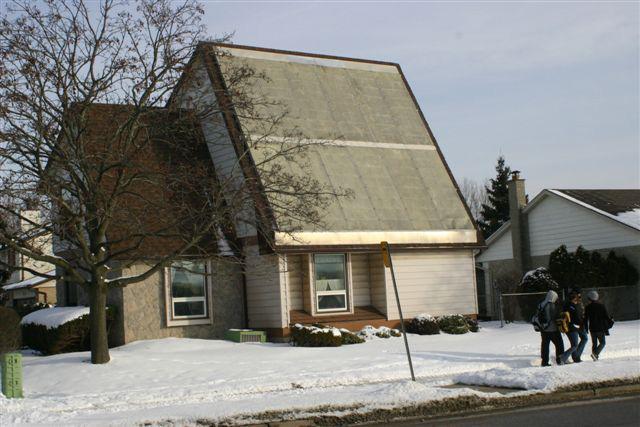
EnergySTAR® qualified, LEED ® Registered, and Greenhouse™ Certified. In 2015, Sifton built the city’s first net-zero home, which meant that it produced as much renewable energy as the homeowners would consume in a year.
Later that year, Sifton took a significant leap forward in sustainable development when it broke ground on West 5, the largest multiuse sustainable development project in North America. When complete, it will include more than 2,000 residential units and up to 400,000 square feet of commercial and retail space. This solar-powered community consumes about 10 megawatts of energy produced within the area, which enables residents to avoid drawing on the energy grid and reduces the buildings’ carbon footprint. Other features include energy-efficient air handling HVAC systems, LED lighting, smart controls, building siting for solar gain, and low window-to-wall ratios. West 5 also contributes to the environment with the installation of 10 bee hive colonies, which can sustain more than one million bees at the height of the season.

“West 5 is a prime example where we have done tremendous work to be able to reduce our carbon footprint and reduce our energy consumption,” said Gooyers. “We have been recognized not only at the local level and the provincial level but also at the national level. Being named Canada’s Best Managed Company for 15 years at the Platinum Level has been a very outstanding achievement for our company.”
Sifton moved its home office into The Sifton Centre in 2017, which was one of the first net-zero buildings in the West 5 development. In 2019, the Ministry of Natural Resources announced its investment in H ēlio, the first mixed-use, multi-unit residential high-rise building in Canada to target net-zero energy. In 2021, the Ontario government named West 5 a new demonstration project
20 | August 2023 continued from page 16




that would explore how the community can help to generate renewable energy and protect the environment. And in its other properties, Sifton switched its landscaping fleet from diesel to electric, which is more environmentally friendly and less intrusive to its residents’ neighbourhoods.

“I hope that when people think of Sifton, they think of the environment and sustainability,” said Brandi McIlvenny, Vice President Residential Rentals and Commercial Leasing, Sifton Properties Limited. “For example, in our H ēlio high rise, we introduced green composting and recycling. Most high rises don’t offer organic recycling, so we’re pleased to go beyond for our clients by obtaining this material and putting it back into the earth.”
A family affair
Sifton is a true family business, which is now into its fourth generation of Siftons involved in running the business. As previously stated, Harry founded the company, and he had a great deal of help from his wife Tina in running the business. She instilled a charitable focus into the company’s foundation.
Their son, Mowbray, worked in a hands-on capacity at Sifton and eventually took over the business. His wife, Doris, was instrumental in helping to run the company, acting as bookkeeper, receptionist, and co-manager. She also cofounded The Sifton Family Foundation, while raising five children (Glen, Sherene, Carol, Paul, and Richard) along the way.
Glen ran the company as President and CEO for a number of years, and his brother Richard
took over when he stepped down. Sherene served as Executive Director of The Sifton Family Foundation for several years. The fourth generation of Siftons includes 11 grandchildren, some of whom are involved in the business.
“The main emphasis going forward will be on Richard’s children, Victoria and Cam, who will carry the company forward,” said Sherene.
Celebration through donation

In support of its 100th anniversary, Sifton Properties Limited is partnering with The Sifton Family Foundation to give $100,000 to individuals and families in need. The funds will help more than 200 families through a number of charitable endeavours. Sifton brought together a team of community connectors within the organization to find opportunities to make the greatest impact with its donations. They also hope to bring more awareness and support to those charities and organizations.
See the sidebar “Giving back to the community” to learn more The Sifton Family Foundation.
Conclusion
After 100 years of building quality and innovation, Sifton has a lot to be proud of. And they are celebrating their achievements with residents and their communities through special events, contests, visual recollections, and charitable contributions. Given the strength of the organization and what they’ve achieved to date, Sifton has a lot to look forward to over the next 100 years.
“The vision of the future of sustainability and engagement is part of who we are,” said McIlvenny. “It’s an everyday conversation for us, and it’s an intrinsic value we carry with us. We always look forward and ask, ‘What can we do better? How can we make a difference? How can we lift our communities?’ That’s why we’re here. That’s why we show up every day.”

22 | August 2023


Office: (416) 675-7283 Email: info@lincolngroup.ca CONTACT US 2001 Albion Road, Unit 22 Etobicoke, ON., Canada M9W6V6 ADDRESS www.lincolngroup.ca WEBSITE ASPHALT PAVING CONCRETE SERVICES SITE WORK SERVICES LANDSCAPE MAINTENANCE LEASEHOLD IMPROVEMENTS SNOW & WINTER MAINTENANCE
Lorem ipsum
Protecting your business from rent strikes
 By David Gargaro
By David Gargaro
If you’re a rental property owner in a large Canadian city, two words will make you nervous: rent strike. It seems like every day another group of tenants is protesting rent increases and choosing not to pay their rent.

Rent strikes might seem like a new challenge for rental property owners. However, they’re definitely not new; tenants have been protesting “unfair” rents for decades. But there seem to be increasingly more coordinated protests against rent increases. And the media is giving protestors more attention than ever. Again, rental property owners are being treated as villains, while the public continues to ignore the influence of government policy and inflation on rising rents.
What is a rent strike?
Most rent strikes involve a group of tenants refusing to pay their rent until the rental property owner meets their demands. The most common demand is to cancel or reduce a rent increase, often due to an above-guideline increase (AGI) application. Tenants have also protested poor property conditions, “unreasonable” rule changes or alleged poor treatment by rental property owners. Rent strikes have also been used to request compensation for “lost” services due to construction, rehabilitation or damage to the building.
Rent strikes typically involve the tenants of buildings where the issues occurred. However, tenant associations, housing advocates, and tenants from other rental properties can join a rent strike to support the initial strikers and attract more attention.
Rent strikes – past and present
Rent strikes are not new. In the 1880s, groups of women led rent strikes in Glasgow’s tenement buildings in protest of large rent increases (25%) and forced evictions. From 2015 to 2018, hundreds of thousands of students at UK universities held rent strikes to demand rent reductions. New York’s Harlem rent strike from 1963 to 1964 took place due to issues with poor maintenance. In the 1960s and 1970s, there were rent strikes across the U.S. due to neglect of repairs in private and public housing stock.
Canada has seen its share of rent strikes. In the 1860s, tenant farmers in Prince Edward Island united to wage a rent strike against absentee farmers. In 1971, a group of tenants in almost 200 units across Vancouver went on a rent strike.
24 | August 2023

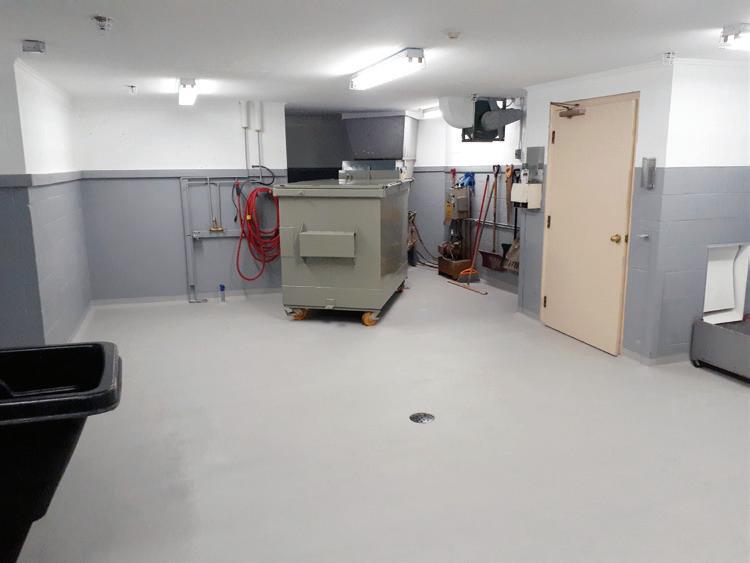


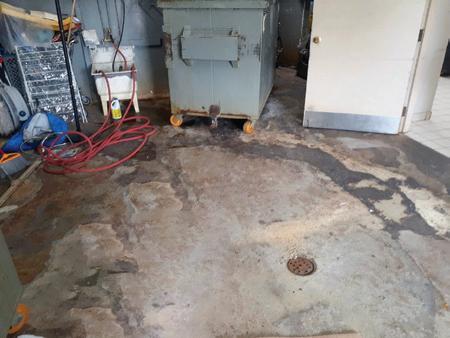

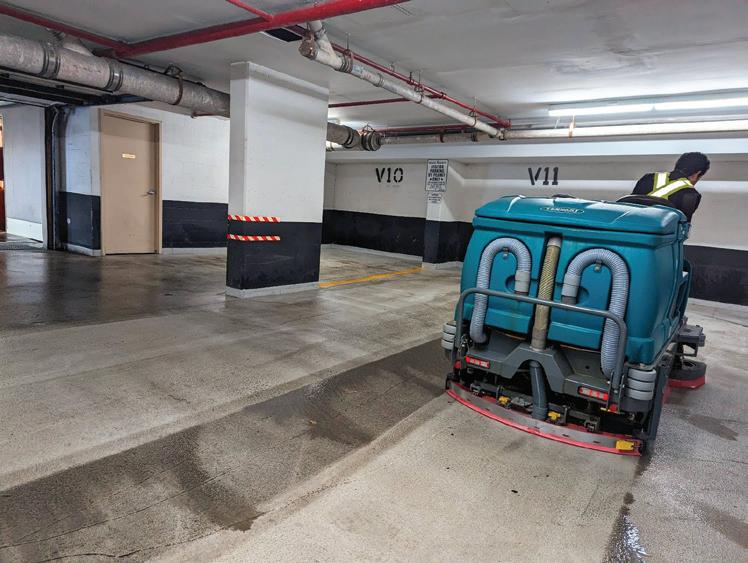
In the past, rent strikes involved groups of tenants protesting issues that affected them all equally (e.g., excessive rent increases, lack of maintenance, mistreatment of women and lower income tenants). Their only way to call attention to their plight and address these issues was to engage in a rent strike. However, the goals and strategies behind rent strikes have changed. Tenant advocacy groups are encouraging tenants in different buildings and in different financial situations to engage in illegal rent strikes. Tenants who have been in buildings for years are being lumped in with tenants who just signed their leases. Financially sound tenants are being pushed to withhold their rent along with tenants facing financial difficulties.
And rent strikes hurt small rental property owners the most, as some cannot afford to lose even one month of unpaid rent. Small business owners are besieged by rising utility and maintenance expenses, so taking away rental income can quickly drive them out of business.
Tenant advocacy groups engage in rent strikes because tenants almost always benefit. They usually lead to negotiations to freeze rents, reduce rent increases or obtain other concessions. Rent strikes call more attention to the tactic, inspiring other tenant groups to follow suit. They also attract negative publicity for rental property owners, and influence public opinion and government action against them.
Understanding your rights
Every province and territory has legislation that describes the rights and obligations of both tenants and rental property owners. For example, in Ontario, the Residential Tenancies Act (RTA) governs relations between tenants and rental property owners.
According to the RTA, rental property owners are responsible for ensuring rental units and the property satisfy health, safety, and housing standards, and they are suitable for occupation given the property’s nature and location. It also gives rental property owners specific rights, including the right to:
Consider recent examples of rent strikes. In 2017, more than 300 tenants across 12 buildings in Parkdale (Toronto) held a three-month rent strike. In 2018, tenants in four multi-unit apartment buildings in East Hamilton held a seven-month rent strike. In the midst of the pandemic, groups of low-income workers who lost their jobs due to COVID-19—as well as tenants who continued to work or receive income—held rent strikes because they “could not afford to pay their rent.” This led to labour group campaigns and government legislation to prevent “COVID evictions” and rent increases.
This year’s rent strikes involve several multi-unit rental properties in the GTA. The most commonly stated reason involves AGIs approved to cover major building repairs and renovations. Some rental property owners in non-rent-controlled buildings faced rent strikes after increasing rents to keep pace with inflation and rising costs. Many reasons for rent strikes are based on made up statistics, half-truths, and falsehoods. The tenant advocates declare a rent increase exceeds the rate of inflation or an AGI is unjustified. These statements are rarely validated but make for good headlines.

• Choose tenants to occupy the units by collecting income information, credit checks, references, rental history, and other criteria as permitted by the Ontario Human Rights Code
• Collect rent
• Increase the rent by the amount allowed by the government
• Enter the rental unit for repairs or maintenance, show the unit to potential renters, and for emergency purposes (as described under the RTA and terms of the lease)
• Evict tenants for breach of material lease terms as provided under the RTA (including not paying rent)
Amendments to the RTA went into effect on September 1, 2021. Rental property owners now have new rights, including the right to apply for an order requiring the tenant to pay reasonable outof-pocket expenses incurred due to the tenant’s conduct (or the conduct of someone visiting or living in the rental unit) that substantially interfered with the rental property owner’s reasonable enjoyment or lawful right, privilege or interest.
The RTA is very clear about rental property owners’ rights as they pertain to rent. They have
26 | August 2023


Serving Southwestern Ontario. Call now to see if your area falls within our service ! Serving Southwestern Ontario. Call now to see if your area falls within our service ! 200
the right to collect a rental deposit equivalent to one rental period (e.g., one month), and to collect the ongoing rent in full on the day it is due. Rental property owners must give at least 90 days’ notice of a rent increase using the prescribed form.
“A residential landlord in Ontario is permitted by the Residential Tenancies Act, 2006 to increase the rent only if at least 12 months have passed from the date the tenancy began with the tenant or from the last increase,” said Kristin A. Ley, Partner, Cohen Highley LLP Lawyers. “In rent-controlled rental units, the amount of the increase is limited to the applicable rent increase guideline without needing approval from the LTB. Above-guideline rent increases require the approval of the LTB.”
Tenants have no right under the RTA to decline payment of the full amount of rent. Of course, this does not mean tenants will pay their rents on time or at all. But the RTA provides rental property owners with the right to terminate a tenancy and pursue other legal remedies to collect payment of rent.
“Where a tenant has filed an application to the Board alleging the landlord is in breach of its maintenance obligations, the tenant may be permitted to pay their rent into the Board to be held in trust pending the final disposition of the tenant’s application,” added Ley.
What to do about rent strikes
Even though the RTA protects the rights of rental property owners to collect rent, tenants can still engage in rent strikes. It has happened before, and it is happening today. Rents will increase due to inflation and the need to cover property maintenance and repair costs. Some tenants will protest those increases. But the RTA protects rental property owners’ rights to increase rents, collect those rents, and make a living.
So, what can rental property owners do when faced with a rent strike?
In many cases, the first step is to give the tenant a notice in writing that you (the rental property owner) want them to move out for failure to pay rent. In Ontario, this would be Form N4 – Notice to End a Tenancy Early for Non-payment of Rent. Notice must be given to the tenant 14 days prior to the eviction date. You can then apply to the Landlord and Tenant Board (LTB) for an order to end the tenancy if the tenant does not pay the outstanding rent.
“It is best for landlords to proceed as they typically would where tenants are not paying their rent, following the usual operational practices of sending reminders, sharing resources that are available to assist with rent payments, issuing N4s, and ultimately applying to the LTB,” said Ley.
“Depending on the behaviour engaged in by participants in the rent strike, such conduct may be prohibited under the RTA, s. 233(j), which makes it an offense to harass, hinder, obstruct, or interfere with a landlord in the exercise of securing a right or seeking relief under the RTA or in a court, or participating in a proceeding under the RTA.”
After providing notice, you can negotiate with tenants on paying their rent. Giving notice before negotiation ensures you’ve taken steps to collect what is owed, putting the onus on the tenant. It is prudent to negotiate with tenants individually, as some tenants might legitimately require financial assistance for various reasons. In this case, direct them to the proper government or social assistance agency. You have no legal obligation to engage with a group of tenants.
“A lease is an individual contract between the landlord and the tenant, and discussions about that lease and personal circumstances around non-payment of rent should be discussed with the tenant only or with the tenant’s legal representative,” said Ley. “Where a tenants’ association or group of tenants wishes to meet to share concerns or ask questions about construction going on at a building or ask questions about an AGI application, then those may be situations where it would be beneficial for the landlord to meet with tenants as a group. Each case and instance will be very specific to the circumstances at issue.”
Conclusion
You have the right to earn a living as a rental property owner, which means collecting rent when it is due. You will face financial challenges, including rent strikes, but you must deal with them. Know your rights and exercise the legal remedies available to collect what tenants owe for rent.
“Owners can best protect themselves from rent strikes by being engaged with their tenant population and being responsive to issues and concerns when they are raised,” said Ley.

28 | August 2023


Real Estate Past Present Future Real Estate
Brought to you by Defying conventional energy thinking, everyday! Vanessa
Legends Legends
With ON
Topple Vanessa Topple
Halifax, a conference, and $1.25
 By Marc Côté
By Marc Côté
RHB has been attending CFAA conferences since the magazine first published in 2010, with the exception of the two pandemic years. To date, the conference has bounced between Toronto and Vancouver, so we were looking forward to this conference in Halifax, which took place from June 14 to 16.
Having travelled most of Canada, this would be my first time visiting Halifax, experiencing not only the city, but also the CFAA Rental Housing Conference after a two year absence. Of course, there would be the usual RHC events, such as the Building Innovations Tour, the economic update from Benjamin Tal, informative education sessions, and opportunities to network. Every CFAA conference is a bit different but I knew what to expect.
And the people of Halifax are truly exceptional. They’re also unbelievably nice and friendly. I know that most Canadians in general are nice, as per our world reputation, but the people in Halifax are truly NICE.
The locals attending the CFAA conference were also incredibly nice. You could tell who was from Halifax and who was from out of town. Local attendees gave off a Halifax vibe, being friendly and generous to everyone. They made the conference that much more enjoyable and one that I will always look back on as a standout.
Having to drive around that week, even the drivers were nice! I’m used to Toronto’s congested roads and aggressive drivers, and I drive accordingly. Traffic in Halifax is nothing compared to that. There are fewer cars, so I wouldn’t really call it traffic, yet the other drivers were polite and accommodating. Even when I was weaving in and out of traffic, like a good Torontonian, I still got friendly waves from drivers letting me through. Honestly, I wasn’t sure how to react, but I definitely appreciated the kindness. I mean, hey, who’s kidding who, I got everywhere faster!
To be honest, I wasn’t in the greatest mood when I arrived in Halifax. While others from RHB flew to the conference, I had to drive nearly 1,800 kilometres to get there. It wasn’t my first choice or one I wanted to do at all, but the circumstances led to this option. So, I loaded up my truck and drove straight from our office in Vaughan to the conference location in Halifax.
If you’ve never visited Halifax, without a doubt, it’s a beautiful city. The view of the boardwalk and skyline is stunning, with the streets sloping down to the harbour. It’s so different from Toronto and Vancouver. Halifax has a small-town feel, even though it’s the largest city in Atlantic Canada. It is very clean, picturesque, and beautifully designed.

And what amazes me more is the people of Halifax had to deal with terrible forest fires while I was there. Some people at the conference knew someone who was forced to evacuate, or had lost their home. And yet everyone at the conference was polite, accommodating, and friendly. I can’t say enough good things about my visit to Halifax and the people who live there.
Let me share an example that exemplifies my trip. As I prepared to leave and the valet helped me load my truck, I asked for the fastest way to leave the city and get on the highway. As part of the directions, he said he was sending me across a “pay bridge” and I would need $1.25. He asked if I had the exact change as it would be required. I
30 | August 2023
rummaged in my pockets and truck and could only come up with $0.80. He reached into his pocket, pulled out $1.25, and handed it to me. Shocked, I said, “Are you serious?” to which he replied, “Well, my directions are taking you over a pay bridge, so it’s OK.” I asked if he wanted my $0.80 and he said it wasn’t necessary and smiled as if this was the right thing to do.

To say I was impressed would be an understatement. At best he was in his early 20s, and to see someone this generous with this matter-of-fact attitude gave me hope for the next generation.
Suffice to say, my 20-hour drive home was as stress-free a drive as it could be. The conference was fantastic too, but the people made my experience even better.
I hope the CFAA Rental Housing Conference returns to Halifax so I have a reason to go back. It’s definitely worth the visit. By the way, not that it matters, but I was never happier to give someone a very generous tip. Good service is hard to come by and great service should be rewarded in kind. Who knows, I may even return to explore the city on my own.

rentalhousingbusiness.ca | 31
Become a referral partner today! Peace of mind for landlords, property managers and leasing agents. westlandexpress.ca 1-866-856-9876 Quick and easy insurance online for your tenants
Golf Classic Raises $69,000 for Interval House

Held at Lionshead Golf Club on Tuesday, July 18th 2023
Interval House

As the first centre for abused women and children in Canada, Interval House is a leader in the campaign for women’s empowerment, providing innovative specialized services that help abused women and their children transform their lives and break the cycle of violence. Interval House’s holistic approach provides a continuum of services from crisis intervention to re-integration into the workforce and community, giving women and children the chance to rebuild their lives.
For more information visit intervalhouse.ca
Platinum Sponsors


FRPO is the largest association in Ontario representing those who own, manage, build and finance residential rental properties. Our membership includes a diverse group of owners and managers, from those with one small building or a single rental unit, up to the largest property management firms and institutional owners and managers. The association also includes our colleagues and partners in industry, including service providers, suppliers, and industry consultants. With more than 2200 members in every area of Ontario, and with over 350,000 homes, we represent the full spectrum of the industry in Ontario.

For more information please visit frpo.org
 FRPO
FRPO
Thank You to our sponsors
Bronze Sponsors
Greenwin Corp.
McIntosh Perry
Midnorthern Appliance
Multitech Contracting 2000 Inc.

Paul Davis
Sherwin Williams


Sparkle Solutions
Media Partner

RHB Magazine
Chocolate Sponsor
Pretium
Water Bottle Sponsor
Ace Group of Companies
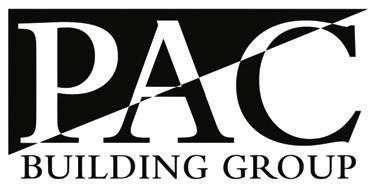

Ice Cream Sponsor
First Onsite
Wine Sponsor
Canmar Contracting
Hole Sponsors
4Rent.ca
RJC Engineers
Sifton Properties Limited
$1000 Closest to the Pin
Lincoln Construction Group
Sky Contracting Inc.
Raffle Sponsor
Zgemi
Driving Range Sponsors
Aird & Berlis LLP

H&S Building Supplies

PestControl Plus
Beverage Cart
RentSync

Hand Sanitizer
ECNG
Gold Sponsors
Silver Sponsors
VeriFast
Employment income
Identity and address
History of NSF fees




Average closing bank balance
Average monthly debt payments
Overdraft percentage
Consistent payment of rent
Consistent payment of bills and more
Reduced average time from 2 hrs to 5 mins
VeriFast
leave a mark

does not
on
Bank statements are predictor of evictions than credit scores Save thousands of dollars by reducing evictions For more information or to book a demo visit www.verifast.com
your property with the power of bank statement analysis
Cost savings up to 50% compared to a credit score YOUR EVICTIONS BY UP TO 25% powered by Canada’s banks
renters credit scores
Protect
REDUCE
Two views of the current housing crisis
By Tony Irwin, CFAA Interim-President
The rental housing industry’s current political problems are mainly the result of rising market rents. The problems are made worse because the federal government recently created the Federal Housing Advocate and the National Housing Council to advocate for the interests of vulnerable populations, and those bodies are biased against market outcomes in favour of a different approach.
The article addresses the various views, including CFAA’s work at the House of Commons HUMA Committee, which held hearing on “financialization” in May and June.
The view of the rental housing industry
For-profit rental housing providers of all sizes are convinced that the current housing crisis has been created by the inability of the housing development industry to keep up with the increase in the demand for housing, due mostly to
• slow municipal planning approvals,
• government-imposed costs and delays,
• a sudden surge in immigration approved by the federal government, and
• shortages of construction trades, labour and equipment.
The main key solution to the housing crisis is more housing supply of all types, at all price points. A second important answer is higher, more targeted income support for low-income renters to afford the housing they need.
The Federal Housing Advocate’s view
However, the Federal Housing Advocate, ACORN and other housing advocacy groups hold a different view. They say the housing crisis has arisen because of “the growth of financialization, treating housing as a commodity – a vehicle for wealth and investment – rather than a human right and a social good for people and communities.”
They say: “… investment firms have been purchasing rental buildings and then upgrading them and raising rents, forcing low-income tenants out of their homes. Because the business model associated with financialization demands short-term high yield profits, rental businesses seek out housing that is ‘undervalued’, which often means housing that is affordable, where the most disadvantaged and low-income people live.”
The Advocate, ACORN and other housing advocacy groups want governments to tax rental housing more, to tighten rent control, and to take other steps to drive the profit motive (and private investment) out of rental housing, replacing private rental housing with community housing. They want that change regardless of the enormous expense to taxpayers which would be involved.
The HUMA Committee
At the recent hearings of the House of Commons HUMA Committee, CFAA presented a strong case that financialization is not the problem, and that tighter rent control and the other solutions put forward by the Federal Housing Advocate would be counter-productive. We also made the case that some current promises of the Liberal government need to be reevaluated, due to the negative effect they would have on rental housing supply.
rentalhousingbusiness.ca | 35 AUGUST 2023

You can watch the presentations and questioning (or read a transcript of the evidence) by clicking on the links at https://www.ourcommons.ca/Committees/en/huma/Meetings. The Advocate, her researchers and ACORN were heard and questioned on May 9 and May 16. Rental housing representatives (and others) were heard and questioned on June 6 and June 9. At https://cfaa-fcapi.org/resources/submissions/, under “Financialization“, you can read:
• a combined summary of the remarks made by all four CFAA speakers,
• the full opening remarks made by each person,
• the (initial) joint CFAA-FRPO written submission (“Brief”) to the HUMA Committee, and
• the final CFAA submission to the HUMA Committee (made after all the witnesses had spoken). Set out below is a summary of the key points which speakers associated with CFAA made, and finally two notes about next steps.
Rental market size and structure
The purpose-built rental market in Canada totals 2.5 million homes. Besides that, there are a little over half million rental homes in social housing, and 2 million more rental homes in the secondary rental market. The total rental supply across Canada is 5 million homes. Because of this widespread competition, large rental providers have no power to set rents above the levels determined by supply and demand.
Why market rents are rising
Market rents are rising is because rental housing supply has lagged behind the growth in the population and in rental demand. On the demand side, there is a growing population, driven largely by immigration, along with increased interest rates which work with the stricter rules for mortgage qualification to make home ownership less attainable to first-time buyers.
On the supply side, there are increasing costs of rental operation, increasing costs to build, growing not-in-my-backyard syndrome (“NIMBY-ism”) delaying new developments, and increasingly hostile political rhetoric aimed mostly at the largest providers of rental housing.
Where does a dollar of rent go?
On average, paying the property taxes, utilities and other operating expenses of 45 cents, 36 cents for the mortgage and 11 cents for major repairs and building modernization, leaves just 8 cent as the typical pre-tax return on each dollar of rent.
A great deal of the existing purpose-built rental stock was built before 1980 – making it over 43 years old. Even with good maintenance, building elements must eventually be replaced or refurbished, including roofs, balconies, heating equipment, elevators, windows, and underground parking structures. Before all the other building expenses, replacing any one of those could easily cost 20% of the total annual building revenue, and some cost much more.
Additional points in the final CFAA submission to HUMA Evictions
In our evidence, CFAA referred to the 2021 Statistics Canada survey of tenants about whether they had ever been evicted. Seven per cent of tenants had been evicted at some point in their lifetime. Assuming the average tenancy experience is 10 years, that means seven-tenths of 1% of tenants are evicted each year, or 7 out of 1,000 tenants Only 10% of all evictions were for demolition, conversion or major renovations. Deducting demolitions --- needed for intensification or new transit lines, we can estimate that only 1 out of 2,000 tenants is evicted for renovations (in any year).
Rent control
In some provinces, rent control is used to protect tenants (or at least renewing tenants) from what are seen as excessive rent increases. That limits the rental income received by rental housing providers, and has unintended consequences, especially:
• Less building modernization, resulting in a rental stock which decreases in quality over time, and

rentalhousingbusiness.ca | 37 NATIONAL
OUTLOOK
• Less new rental construction, resulting in a smaller rental supply over time (than the supply would be without rent control).
Vacancy decontrol, above-guideline increases (AGIs) and exemptions for new rental construction are intended to reduce those effects, but they do not fully eliminate them. From a public policy point of view, there are important trade-offs between the protection of current, renewing tenants, and the size and quality of the rental supply in the medium and long terms. The Advocate and her researchers and supporters do not address the trade-offs involved in making rent control tighter. They leap directly from saying rents are rising too much, to saying governments should stop those rent increases by tighter rent regulation. They ignore the trade-offs and the negative consequences of tighter rent control. The approach of ignoring well-documented unintended consequences dramatically raises the risk of a bad public policy decision.
On June 9, the HUMA Committee heard from Steve Pomeroy, an independent housing expert, who often supports community housing and other ideas of the housing advocates. He turned back a suggestion that tighter rent control is the solution to the current housing crisis. Instead, he stated that the goal needs to be to find the “sweet spot” which balances the protection of existing tenants with continued support for a healthy, growing rental supply.
While CFAA would prefer no rent control at all, it is not realistic to seek the rolling back of rent control when so many people are worried about rising rents. In most provinces, the best position for memberassociations is that rent control should not be tightened. With that goal in mind, CFAA defends the provinces’ jurisdiction, while supporting member-associations in holding the line in each province.
CFAA submits that there is not just one “sweet spot” across Canada. Besides differences in the attitudes of investors and the public, between say, Alberta and Ontario, or Ontario and Quebec, there are also huge differences in the economies of various communities. It is hard enough for the ten provinces (and three territories) to address the different needs within their boundaries. It is utterly impossible for anyone in Ottawa to determine the best rent control policy mix across Canada. There is no such standard mix! To come close to a good mix in each area, the provinces need to be allowed to make the choices, addressing the housing needs and investor attitudes within each province.
CFAA’s concluding comments to the HUMA Committee
CFAA made concluding comments in both its original joint submission and its final submission. CFAA condemned any action to push people out of their homes. However, under Canada’s Constitution it is up to the provinces to regulate and prevent such action. In addition, CFAA submitted that the evidence is that such action takes place only in very isolated cases; and that federal income tax law is not a suitable tool to address that isolated behaviour.
Regulating against financialization, limiting expansion by REITs or other for-profit rental housing providers, or tighter rent control, would reduce the construction of new rental housing, and reduce the modernization of the aging current stock. Instead, to increase rental supply (and thus temper increases in market rents), governments need to encourage and incentivize new housing supply from rental providers of all sizes, and/or reduce current disincentives (like the GST/HST).
Financialization is not nearly as significant an issue as it is said by some to be, and the proposed “cures” being suggested to the Committee are much worse than the alleged “disease”.
The next stage
The HUMA Committee staff will write a draft report over the summer. The Committee will revise the report, and issue it in the Fall. There could be a majority report and one or more minority reports. CFAA will then need to address the Committee report(s) with key decision makers, including the Prime Minister, the Finance Minister and their key officials.
38 | August 2023
AUGUST 2023
Principal Partner



Strategic Partner
Host Supporting Partner


Media Partner













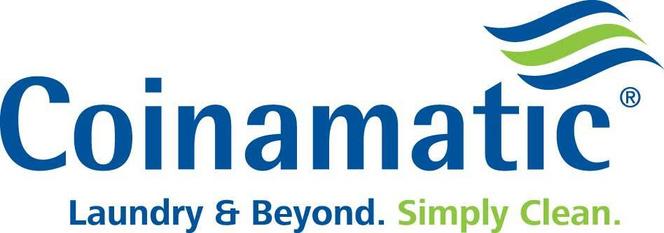





Major Sponsors
Diamond Sponsor
Platinum Sponsors
Silver Sponsors
Event Sponsors

CFAA thanks all Sponsors of CFAA-RHC 2023
CFAA-RHC 2023
Panelists and Moderators

Thank you to all speakers for their contribution to the success of the education portion of the conference.


Curtis Allan - iStall parking
Asquith Allen - FRPO
Jennifer Bateman-Hatch - CAPREIT
Anne Baum - Towne Properties
Nick Beynon - CPHR Nova Scotia
Renee Bourgon - Renee Bourgon Consulting
Margaret Brigley - Narrative Research
Ruth Buckle - Killam REIT
Dennis Burnside - Capital Hill Group
Aaron Caldwell - Killam REIT
Ciana Canci - Canci Rentals
Charity Carr - Efficiency Nova Scotia
Avrom Charach - Kay Four Properties Inc / PPMA
Cameron Choquette - SKLA
Jody Comeau - First National Financial
Chris Crawford - Fathom Studio Architects
John Dickie - CFAA
Dan Dixon - The Minto Group
Josh Donen - Gryd
Lindsay Downie - Southwest Properties
Brennan Ferguson - Bruce Sutherland Assoc Ltd
Phil Fraser - Killam REIT

Jeremy Godfrey - Killam REIT
Ed Hachey - EVStart
Nick Harris - Killam REIT
Alf Hendry - Homestead
Dean Holmes - QuadReal
Tony Irwin - FRPO
Joanna Jackson - Minto Properties
Jeremy Jackson - Killam REIT
Andrew Kent - Killam REIT
Sheena Keslick - Mainstreet Equity
Hugh Kolias - HappyCo
Chris Lindish - Yardi
Virginia Love - Entrata
Elliot MacNeil - The Bruno Group
Trish MacPherson - ASH REIT
Keith Maddison - Nova Scotia Power
George Marine - Skyline Living
Colleen McCarville - Killam REIT
Erin McNutt - Lawen Group
Joe Metlege - Templeton Properties
Kandas Miller - Colonnade Bridgeport
Peter Mills - Wyse
Paula Munger - National Apartment Association
Tamara Oliver - Killam REIT
Steven Osiel - 3rd Quartile
Matthew Pendlebury - CBRE
Andrew Pride - Andrew Pride Consulting
Michael Richard - Skyline Living
Stuart Richens - Apartments com / Costar
Andrea Rocheleau - Skyline Living
Kevin Russell - IPOANS
Gloria Salomon - The Preston Group
Willy Scholten - NBAOA
Matt Seashols - Yardi
Oksana Shkurska - Dalhousie University
Kris Skiba - Dexel Developments Ltd
Kellie Speakman - Preston Living
Max Steinman - RentSync
Christian Szpilfogel - Aliferous Group


Benjamin Tal - CIBC World Markets
Wayne Tuck - Yardi
Krish Vadivale - Skyline REIT
Kim Warner-Burgess - Killam REIT
Sarah Yusyp - Skyline Living
The rental housing industry's political problems
Operations Roundtable Leasing tools from inquiry to signing
T U L A T I O N S T U L A T I O N S
g A w a r d s r e c o g n i z e s e x c e l l e n c e a m o n g
l o y e e s a n d s u p p l i e r s a c r o s s C a n a d a .
e c o g n i z e d t h e w i n n e r s o f t h i s y e a r ' s
C F A A A w a r d s D i n n e r i n H a l i f a x .
f t h e C F A A R e n t a l H o u s i n g A w a r d s 2 0 2 3 !
nt






Hazelview Properties
IPOANS s
Minto Apartments
Shiplake Properties Ltd.

Skyline Living
Starlight Investments

Wyse
h p e o p l e a n d c o m p a n i e s , a l o n g w i t h t h e t h e C F A A w e b s i t e u n d e r N e w s .
n e w h o e n t e r e d t h e A w a r d s P r o g r a m , a n d e s e n t a t i o n S p o n s o r s .
rentalhousingbusiness.ca | 41












Contact Michael Gnat 416-635-4835 mgnat@midnorthern.com 45 Red Maple Rd Richmond Hill, ON 1-844-733-1696 www.thebrick.com www.midnorthern.com Coming soon... New Luxury Appliance Showroom
President’s message
If you live in the Greater Toronto Area, you know summer is coming to an end and school is about to begin when the Canadian National Exhibition opens its gates. At FRPO, as we look to the fall, we hope there are no further increases to interest rates and that inflation continues to ease, specifically related to building costs. This will encourage purpose-built rental projects currently on hold to move forward.
Speaking of building, Ontario needs to build, full-stop. This is particularly true in larger municipalities around the province. This spring, Toronto approved a by-law that adds density by allowing for multiplexes to be built across the city. Though not a panacea, this “gentle density” is more of what we need to address the housing and affordability crises. FRPO would like to see Toronto’s new mayor and city council look for new ways to add density and remove barriers to allow more homes. In particular, we would like them to approve the building of purpose-built rentals. Cities such as Toronto can no longer afford to allow NIMBYism to stand in the way of housing development.
We continue to support the province’s efforts to build more homes through its Housing Supply Action Plan. Important work has begun through Bill 23, More Homes Built Faster Act and Bill 97, Helping Homebuyers and Protecting Tenants Act, and this needs to be continued and scaled. A priority must be placed on purpose-built rentals and ensuring that there is a favourable environment to see new projects come online. Projects are being delayed and even shelved with the significant increase in building costs and existing permitting processes.
FRPO will continue to encourage all levels of government to prioritize and incentivize the construction of purpose-built rental housing by speeding up approvals, cutting red tape, and addressing government fees and charges to level the playing field.
I hope you made the most of your summer and enjoy what’s left before sending the kids back to school. If you’d like to refresh your knowledge on matters related to rental housing, or have some ideas for future seminars, don’t hesitate to reach out. We look forward to hearing from you.
Tony Irwin, President and CEO, FRPO, and Interim President, CFAA

rentalhousingbusiness.ca | 43
Past events
2023 FRPO Charity Golf Classic

For the last two decades, FRPO has been hosting the Charity Golf Classic. This year’s event took place on July 18 at Lionhead Golf Course in Brampton. The event was a great success, selling out as usual, with 288 golfers taking part. Every year it seems like the golf tournament attracts more people wanting to play, meet other members, and support a great cause. The evening cocktail reception was also a hit, with more than 320 people attending the sold-out event. It was a great evening with amazing food, plentiful networking opportunities, stories about great golf shots, a lot of well-won prizes, and fundraising for a great cause. The charity auction provided some amazing options for attendees, including tickets for sporting events, golf and attraction passes, televisions, signed jerseys, framed art, and much more.
“We’ve built a reputation of putting on an efficiently run event with fantastic networking opportunities, and it’s an entertaining day for everyone,” said Lynzi Michal, Director, Membership and Marketing, FRPO. “Our members are also very engaged with Interval House and consistently show up to support this very worthy cause.”
new lives, free of violence.” Interval House can provide shelter to 12 women and 18 children at any given time, and they can connect them with the tools needed to rebuild and transform their lives and survive going forward.
The Charity Golf Classic has been helping to raise funds for Interval House for 15 years. FRPO is proud to announce that, with the support of its members, this year’s Charity Golf Classic has raised almost $69,000 in support of the charitable organization. This year’s total included $50,000 of direct support from FRPO, a $2,000 donation from Rogers Communications, a $1,000 donation from KG Group, and almost $16,000 from the raffle and silent auction sales.

Interval House is Canada’s first centre for women survivors of intimate partner violence and their children. Founded in 1973, the charitable organization takes a “holistic approach to helping women and children leave abuse behind and start
“Some of our members have had a relationship with Interval House, and it was also a good fit with FRPO,” said Michal. “Interval House helps women to get back on their feet, provides them with a valuable life and career skills, and helps to get them into housing, so it’s definitely a worthy cause that we’re proud to support.”
All the thanks go to the event’s sponsors, donors, participants, and volunteers for making this year’s event another grand success.
Upcoming events
FRPO MAC Awards
The MAC Awards Gala will take place on Thursday, November 30, alongside the Building Show. It is the premier annual event for FRPO’s members, attracting 1,200 attendees that include everyone from owners/managers to third-party managers and REITs. This gathering allows attendees to celebrate excellence in the residential rental housing industry and further the high standards championed by FRPO. We invite all types of member organizations to participate.
The deadline for award submissions is Wednesday, September 20 at 12:00 pm. Please allocate sufficient time to complete your submissions prior to the deadline, as late entries will not be accepted. As award criteria are updated annually, we kindly request that you carefully review each category. If you require any clarification, do not hesitate to contact us.
Submission information
We have implemented many changes over the last several years in an effort to streamline the submission process. Please review the requirements carefully before submitting your nominations. If you have any questions, please contact Lynzi Michal at lmichal@frpo.org
44 | August 2023
2023 requirements
All submissions must be completed directly through the online portal in the provided form fields specific to each award category. More information is provided below about this process. In addition, each organization will be limited to a maximum of two submissions per category unless otherwise noted.
Preparing your supplemental files
We have launched a new portal this year which has led to some minor updates related to the supplemental file uploads. Please review the following information carefully.
• All required fields must be completed and word limits adhered to in order to successfully upload your submission.
• Accepted file types include: .jpg, .pdf, .eps, .png, .psd, .doc, .docx, .ai.
• The individual maximum file size is 20MB. Each category also includes a maximum number of files that you may select for upload.
• Please ensure you have submitted ALL required supplemental files and photos to support your entry including your high-resolution company logo.
• Once you have selected your files, scroll to the bottom and click on submit.
• Upon successfully submitting your nomination, you will receive an on-screen confirmation as well as one sent by email.
• FRPO reserves the right to cancel or amend categories.
• Judging will take place in October and a list of finalists will be announced in early November.
Information about the submission process
The award submission portal will open at least two weeks prior to the deadline. Members will receive an email notification once the submission portal becomes available. Please note that most awards are exclusively open to rental housing providers. However, there is a community service award for suppliers, as well as the company
culture award, which welcomes participation from suppliers and rental housing providers.
The FRPO MAC Awards are inclusive of organizations of all sizes. Our judging panels comprise professionals with diverse expertise, who will narrow down the field to three finalists. The ultimate winner will be announced at the 2023 MAC Awards Gala. Finalists will be notified in advance. All nominations must be FRPO members in good standing. Additionally, any nominated buildings must be managed or owned by your organization at the time of submission, and they must be included in your FRPO membership dues. To streamline the length of submissions, each required answer has a maximum word count. Please refer to the individual questions for the specified limits. However, it is not mandatory to use the maximum word count. If your answer exceeds the designated word count, you will be unable to upload your submission.
Kindly note that hyperlinks are generally not permitted unless otherwise specified (e.g., website addresses). Judges will disregard any hyperlinks included in fields where they are not allowed. You will have the option to upload supplemental photo files in your preferred order for the judges to view. Please ensure that each photo is clearly labeled for the judges’ reference. Additionally, high-resolution versions of your company logo must be included for each award category you apply for.
We strongly encourage the submission of highquality, well-shot photographs. Poor-quality photos may potentially impact your submission. You may even consider adding text to your photos to assist the judging panel in assessing your application. Any photos included in your submissions may be used in the event production, promotional materials, partner advertising or other related activities.
Please be aware the company name on your application will be displayed during the awards presentation if you are named a finalist.
Ontario’s leading advocate for quality rental housing
FRPO is the largest association in Ontario representing those who own, manage, build and finance residential rental properties.
membership inquiries please contact Lynzi Michal, Director,
lmichal@frpo.org www.frpo.org
rentalhousingbusiness.ca | 45
For
Membership & Marketing Federation of Rental-housing Providers of Ontario 20 Upjohn Road, Suite 105 Toronto M3B 2V9 416-385-1100 x 22
Yes, we can!
Since MetCap Living established itself as a leader in property management, we have routinely been asked one, simple question; “Can you help us run our property more effectively?” And, for well over thirty years, the answer has remained — Yes, we can! Our managers are seasoned professionals, experienced in every detail of the day to day operations and maintenance of multi-unit rental properties. From marketing, leasing, finance and accounting, to actual physical, on-site management, we oversee everything.

Guaranteed vacancy reduction, revenue growth and net profitability — when you’re ready to discuss a better option; we’ll be there. You can count on it.
Kazi Shahnewaz Director, Business Development
Office: 416.340.1600 x504
C. 647.887.5676
k.m.shahnewaz@metcap.com
www.metcap.com
Hot Topics:
HDAA provides an update on the City of Hamilton's Rental Licensing pilot project, the encampment protocol, and upcoming housing developments. pg. 49

LPMA unveils the speakers and topics for upcoming meetings and describes Ontario's proposed legislation to discourage "renovictions." pg. 53
EOLO provides updates on the City of Ottawa's solid waste policies and the Vacant Unit Tax. pg. 57
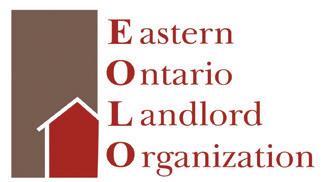
SKLA discusses recent events, including the Annual General Meeting and CFAA Rental Housing Conference, as well as the association's advocacy efforts. pg. 61

The Member Associations
RHB’s forum for rental housing associations to share news, events and industry information
up to Make upgrades that make a difference—the Affordable Multi-Residential Housing program provides you with expert assistance, financial incentives and limited-time bonus offers up to 75 percent of energy efficiency upgrade costs, up to $200,000. * Boilers, high-efficiency equipment and energy assessments are all eligible—plus get free in-suite upgrades.
• Financial incentives help reduce capital upgrade costs.
• Reduce energy, maintenance and operating costs.

• Optimize building performance.
• Improve energy efficiency and reduce emissions.
•
• Boilers
• Building automation controls
• Ventilation technologies
• Variable frequency drives
• Water heaters
• Energy assessments
Affordable Multi-Residential Housing Program Deadline
for limited-time incentives! for incentives
75%
extended
Book by Aug. 31
upgrade now?
Why
Incentives for building upgrades and more: Is your building eligible? This program is for:
Social and municipal housing providers
Shelters and co-ops
•
•
Eligible market-rate multi-family buildings Let’s get started! Contact an Energy Solutions Advisor today. enbridgegas.com/affordable * HST is not applicable and will not be added to incentive payments. Terms and conditions apply. Visit enbridgegas.com/affordable for details. Limited-time offer up to 75 percent of energy efficiency upgrade costs, up to a maximum of $200,000 per project is available to all Enbridge Gas affordable multi-residential housing customers. Contact your Energy Solutions Advisor to confirm eligibility. To qualify for bonus incentives, purchase order must be provided by Aug. 31, 2023 and equipment installed and commissioned by Oct. 31, 2023. Incentive offers are subject to change based on budget availability. © 2023 Enbridge Gas Inc. All rights reserved. ENB 1601 06/2023
PRESIDENT’S MESSAGE
Summer is in full swing and the HDAA has been focusing on getting ready for the second half of the year, as well as strategizing our plans to combat many of the bylaws the City of Hamilton has either already put in place or hopes to create. The HDAA will have two more dinner meetings before the end of the year, as well as a presidential election. We hope everyone has a great rest of their summer and we look forward to seeing our members at the next dinner meeting in September.
- Arun Pathak, President, HDAA
Licensing update
On June 13, 2023, the City’s Planning Committee met and discussed the latest update to the Rental Licensing pilot project.

As noted in the charts below, both the compliance rates and currently licensed unit rates are quite low. The report also noted that 657 properties in zones past their application period have been investigated. Those investigations resulted in an increase in zoning verification applications and license applications. Prior to proactive enforcement, Licensing was receiving approximately 16 applications per month. Following increased proactive enforcement, that number has increased to 26 per month on average. Overall, there have been 223 rental housing license applications received by the City with 69 issued as of March 31, 2023.
Based on the original identified list of suspected rental housing units presented to Council, below are the percentages of applications received and licenses issued – 23.8 per cent of all applications received are a direct result of proactive enforcement.
Based on these numbers, we would argue that the licensing pilot project has been unsuccessful so far, particularly due to the fact initial projection numbers for a no net levy impact were to see 2,000 rental units licensed annually during the project to offset the estimated costs of $2,147,055. There are still three more zones to capture; however, seeing as the pilot project is more than halfway through its one of seven zone application periods with only 223 applications versus the anticipated 2,000, it appears it will be quite an uphill battle to show that licensing in the City would be successful. For those wanting to read the full report, you may find it on the City of Hamilton’s website.
Hamilton encampment protocol
In light of growing numbers of encampments in Hamilton and growing concerns about homelessness, the City is currently looking at an encampment strategy that would consist of two components: an encampment protocol and sanctioned encampments. The encampment
rentalhousingbusiness.ca | 49
Zone 1 Zone 2 Zone 3 Zone 4 Zone 5 27 24 14 2 2
Table 2: Licensed rental units
From April 1, 2022 to March 31, 2023, 69 licenses have been issued.
Status Zone 1 Zone 2 Zone 3 Zone 4 Applied 40.3% 33.1% 25.3% 6.1% Licensed 13.4% 15.3% 9.8% 0.8%
Table 1: Compliance rates
protocol would involve a set of rules that would govern how small encampments could exist in the City, separate from possible sanctioned sites for larger encampments. There would be a limit of five tents per encampment cluster, as well as distance limits. For example, an encampment cluster must maintain a five-metre distance from private property, and sites with environmental or heritage designations, and a 50-metre distance from schools, daycares, and recreational assets like pools.
Sanctioned encampments would be managed sites on City-owned land in three to five locations across the City. The City and service providers would give residents services like sanitation, electricity, and storage for their belongings. This could be in the form of tiny homes rather than tents. There are no specific sites in mind yet, but sites will need to be able to accommodate between 30 to 50 tents (or tiny homes), be near services (like a transit route), and offer some privacy.
The City held three public sessions, the second of which was attended by over 1,000 residents who turned out for a two-hour talk that also included City staff and people experiencing homelessness. Many residents were concerned about encampments in the City and around their homes. The City has already declared states of emergency related to homelessness, opioid addiction, and mental health. Since December 2021, the number of actively homeless people in Hamilton has hovered around 1,600, with approximately 165 individuals “truly finding themselves unsheltered.”
When asked, Premier Doug Ford wasn’t warm to the idea of sanctioned encampments in Hamilton, saying it wasn’t feasible for families living near them and that residents in tents needed to “move on.” After reiterating new homelessness prevention funding for Hamilton, about $27.8 million in each of the next three years, the premier said encampments “taking over communities” and “taking over parks” is not acceptable.
Meanwhile, the City’s shelter system remains overwhelmed, housing some 300 people on average every month. There are currently 265 individual beds and 62 family rooms on a given night in the City’s shelter supply. The executive director of Good Shepherd in Hamilton said the lingering effects of the pandemic have kept the system “over capacity,” despite the recent addition of a 20-bed women’s shelter and the opening of supportive housing for up to 73 women and non-binary and transgender individuals.
Questions about using vacant properties like empty schools was brought up by some residents. However, those properties are owned by the schoolboards and the province, and it would not be an easy process to use them for a shelter or living space. If a suitable property was found, it would need to be bought and then retrofitted, a process that would take some time.
None of the proposed encampment protocols are final. Feedback from the community will be compiled by City staff who will be presenting a revised protocol to Council. That feedback, including a scan of what is being done by other municipalities, is scheduled to be presented to Council for their review and decision in August.
Hamilton developments
In the last article on upcoming Hamilton developments, we mentioned the muchanticipated Jamesville development, which would bring a 46-unit, rent-geared-to-income apartment building, as well as 447 units slated to be market-priced, stacked townhomes. It would be replacing a townhouse complex that consisted of 91 subsidized townhomes, which has been closed down for several years awaiting redevelopment. At the time of our last update, the

50 | August 2023
development had been further stalled by a CN rail appeal. The appeal centred on concerns about odour, vibration, noise, and safety related to the proximity of the proposed development to the railroad’s marshalling yard and whether the proposed sensitive land uses are appropriate for the property.
The Ontario Land Tribunal recently provided an update that the City and CN Rail will conduct confidential mediation talks during July and August in hopes of reaching a settlement to allow the construction of housing at the site. CN would like the Tribunal to impose more rigid noise mitigation requirements for the proposed 447-unit redevelopment, which is located approximately 230 metres east of CN’s Stuart Street Yard. It is not objecting to the development as long as the impact on the adjacent rail operations is accounted for, and appropriate mitigation measures are applied. Ontario Land Tribunal Member Steve DeBoer expressed optimism the parties will reach an agreement before the next CMC hearing date on September 8.
One of the most anticipated Hamilton developments, however, is the Pier 8 redevelopment. The Pier 8 project is expected to transform a 13-hectare former industrial shipping pier into a new mixed-use residential and commercial development. The redevelopment of Pier 8 will create a vibrant urban waterfront community that will include approximately 1,500 residential units, approximately 13,000 square metres of commercial and institutional space, and over 1,400 parking spaces. It will also be a great revenue generator for the City. When the redevelopment is completed, stretching from Bayfront Park to the HMCS Haida, as it will add $9 million (in 2017 dollars) to the City’s revenue every year.
The redevelopment is also estimated to generate $1 billion in private-sector investment, as the City will sell 42 per cent of the land for development. The plan, made up of multiple smaller projects, will take another 15 to 20 years to finish and cost the City $140 million. A 45-storey condo tower, with approximately 429 residential units, is one of the proposals for the site. If approved by Council, it would become the tallest building in Hamilton.

Past events
The HDAA is thankful to our members for a successful first half of the year! We held a great trade show and golf tournament and would like to thank all our members and suppliers who continue to support the association.
June 6, 2023 – Golf tournament
The HDAA’s first golf tournament since the pandemic was a huge success. We had a beautiful day of golfing and networking, fantastic weather, and a great dinner with some excellent prizes. We were joined by RHB as well, who gratefully documented the day for us. We want to send a big thank you to everyone who participated, including our wonderful event sponsors.
Upcoming events
September 13, 2023 – Dinner meeting
The second half of the year will start off with a dinner meeting on September 13. Make sure to mark your calendars and keep an eye out for our emails for more details.
November 8, 2023 – Dinner meeting
The HDAA will be holding our last dinner meeting of the year on November 8. Make sure to mark your calendars and keep an eye out for our emails for more details.
Hamilton & District Apartment Association
Since 1960, the Hamilton & District Apartment Association has grown significantly. Our members manage over 30,000 units throughout Hamilton, Burlington, Brantford, Guelph, Mississauga, Oakville, St. Catharines and into the Niagara Peninsula. The association is a highly respected organization, sought out regularly by government, industry, media and the public.

Interested? Call us or join online!
Ph: 905-616-2058
Web: www.hamiltonapartmentassociation.ca
rentalhousingbusiness.ca | 51

Over 60 Years of Experience (905) 842-4141 www.awesleypaving.com Proven Professional Paving Services Commercial • Industrial • Residential Bonded • Insured
PRESIDENT’S MESSAGE
LPMA unveils topics, speakers for 2023-2024 meetings
Summer has finally arrived, the kids are out of school, and it’s time to relax, slow down, and reset. LPMA’s board of directors and committees are busy planning for the year ahead. You recently asked for specific initiatives and we listened. They are as follows:
1. We will be moving our members’ meetings from the London Hellenic Community Centre to the Highland Country Club, the clear winner with its great location and free parking, not to mention its professional and welcoming ambiance.
2. For the calendar year 2023-2024, we will be hosting four members’ meetings with great topics and amazing speakers. We’re looking forward to seeing everyone there. Mark your calendars for the following dates:
• October 10: Legal discussion on amendments to the Residential Tenancies Act and Landlord and Tenant Board processes

• January 9: Operations update: fire safety, security, and tackling homelessness
• March 5: Canada Mortgage and Housing Corp. presentation and roundtable discussion among leading London developers
• May 14: Updates and insights from FRPO and CFAA
If you haven’t yet registered, our 23rd annual charity golf tournament takes place on September 11 at FireRock Golf Club. Proceeds from the event will benefit Karen’s Place, a transitional home for older women experiencing homelessness. The five-bedroom home honours LPMA member Karen Crich, who passed away in 2021.
Sincerely,
- Richie Anand, President, LPMA
ONTARIO TO SAFEGUARD TENANTS’ RIGHT OF FIRST REFUSAL IN PROPOSED ‘RENOVICTION’ LEGISLATION
Landlords will need to be especially careful about securing vacant possession now that the provincial government is introducing changes to protect tenants against “renovictions.”
Bill 97, which hasn’t yet been proclaimed in force, makes it mandatory for landlords who serve tenants with an N13 notice of eviction to also provide them with a report from a qualified individual. The report must state that vacant possession is needed to carry out the work and that a building permit will have to be issued. An expected timeline for the renovation must also be included.
If landlords don’t serve both documents together, the N13 notice is void and landlords won’t be granted vacant possession, said London lawyer Joe Hoffer. Landlords must also give tenants at least 120 days’ written notice and pay them compensation equal to three months’ rent regardless of whether they intend to return. “If you mess up that part of it, you may not find out until 120 days later that you’re not going to get possession,” Hoffer said. He added it would be expensive for a landlord to have to start over if construction crews were under contract to begin the work on a pre-arranged date.
rentalhousingbusiness.ca | 53
Richie Anand
An adjudicator is not bound by a report indicating that vacant possession is needed. That’s problematic, Hoffer said.
“Board members don’t have any special expertise when it comes to construction… It just invites disputes and more litigation.”
As is the law currently, landlords must give tenants at least 120 days’ written notice. Landlords of buildings with five or more units must also generally pay tenants compensation equal to three months’ rent by the termination date regardless of whether the tenants intend to return. Landlords of buildings with four or fewer units generally need to pay the rent for the lesser of one month or the period during which the unit is being repaired or renovated.
Right of first refusal
One aim of the province’s changes through Bill 97 is to ensure tenants are fully informed about the renovation timeline, Hoffer said. When landlords serve the N13 notice, they are required to give tenants who intend to return to their unit an estimate of the length of time it will take to complete the work and then update them with any changes to the timeline. Once the unit is ready, tenants will have 60 days prior to the end of their rental period to exercise a right of first refusal. This covers situations in which tenants have rented another unit for the duration of the renovation and need to give that landlord 60 days’ notice so they can vacate and re-occupy their previous unit.
If a landlord doesn’t allow a tenant to return after a renovation or hasn’t complied with the steps outlined in the legislation, the Board can find that the landlord acted in bad faith.
“If it’s bad faith, then there are very severe penalties to the landlord,” Hoffer said.
Fines can be levied at up to $500,000 for corporations and $100,000 for individuals, including directors of corporations. An order could also be made to put displaced tenants back into possession of their units, although that will not be done if an innocent new tenant is in possession of the unit.

If landlords refuse to allow tenants to return at the same rent, tenants would have two years from the date they vacated or six months after the renovations, whichever is longer, to seek a remedy from the Board compared to the standard limitation period of one year.
Although many tenants take the compensation of three months’ rent that landlords are required to offer and enter into a new lease elsewhere, not all can afford to pay market rent at another building. Other tenants stay with friends or family and then reoccupy their unit at the rent they paid prior to the renovation. Hoffer said it’s a great deal for them because their units were fully renovated at the time that major capital work, such as replacing plumbing and electrical systems, was carried out.
Tenant protection measures
Hoffer said the changes in Bill 97 are tied to the province’s desire for landlords to upgrade older buildings, balanced against the disruption to tenants where vacant possession is required. Particularly when plumbing and electrical infrastructure is being altered, the only way major upgrades can be done is by securing a building permit and vacant possession because vital services won’t be available to tenants while the work is being carried out. Although this is a legitimate use of the N13 notice, many tenants are still in a bad situation.
“The goal is to put more protections in for tenants and better assurance that a tenant will be able to exercise a right of first refusal,” Hoffer said. However, there is little incentive for landlords to upgrade their buildings if they can’t charge a higher rent when tenants return.
54 | August 2023
Landlord’s own use


The proposed legislation requires landlords to move into a unit by a specific deadline when they evict the tenants to use the unit themselves or for their family members. That deadline will be prescribed by the regulations. Currently, if landlords want to renovate a unit and live in it themselves, there is no set time by which they or a family member need to move in.

Air conditioning units
As part of Bill 97, tenants will be allowed to safely install window or portable air conditioners at their own expense as long as they inform their landlord in writing before the installation. Landlords can still prohibit the installation of a window AC unit over a sheer drop because of safety concerns that it could fall and injure a passerby below, Hoffer said. Tenants must pay an additional seasonal charge unless the lease states that the unit may be installed without an increase in rent. Currently, that charge can be a standard charge for the building. Under Bill 97, each charge is to be based on the energy efficiency of the AC unit and the tenant’s estimate of how much they will use it, as stated in
“You find yourself as a landlord in a situation where you’re absorbing more of the electricity cost, but who’s going to go to the Board to fight about the difference between $50 and $20? That means you’re just going to go along with it.”
Under the current law, the question of allowing air conditioners varies from landlord to landlord, Hoffer said. The standard LPMA or FRPO lease states that the only appliances to be allowed are those that are already in the unit. Tenants need landlords’ written consent to install an AC unit and have to pay the required charge in exchange for running the unit as much as they desire. Many landlords don’t allow AC units over a sheer drop to prevent a repeat of the accidental death of a two-year-old girl in Toronto who was hit by an air conditioner that fell from an apartment window in 2019. Other landlords allow AC units over sheer drops if they are installed by a professional.
The government included air conditioning in Bill 97 as a way of addressing the fact that summers are becoming hotter, Hoffer said.
rentalhousingbusiness.ca | 55
MULTI-RESIDENTIAL CONTRACTING Design-Build Common Area Refurbishment Building Envelope Restoration V i s i t u s o n l i n e a t w w w p a c b u i d l i n g g r o u p c o m o r c a l l 9 0 5 - 6 0 5 - 4 7 2 2 t o g e t s t a r t e d t o d a y ! W e p a r t n e r w i t h o u r c l i e n t s t o u n d e r s t a n d t h e i r g o a l s a n d i n t e r p r e t t h e i r v i s i o n , b u i l d i n g s p a c e s t h a t a r e d i s t i n c t l y s u i t e d f o r e a c h e n v i r o n m e n t W i t h a n i n t e g r a t e d a p p r o a c h a n d s e a m l e s s p r o c e s s , w e o u t p a c e t r a d i t i o n a l e x p e c t a t i o n s .

The official publication of: Canada’s #1 most widely read publication for Apartment Owners, Managers and Association Executives Vol. 16 No. 2 August 2023 Sifton: 100 years of building commuities 100 OneVoice,OneMessage,OneMagazine! Thinkaboutwhatyou’llmissinthenextissue.SubscribetoRHBMagazinetoday!rentalhousingbusiness.ca/subscribe
Chair’s message
As stated on page 8, I have stepped down as President of Canadian Federation of Apartment Associations (CFAA). However, I will be continuing as the Chair of EOLO. I look forward to continuing to represent EOLO members in dealing with the City of Ottawa.
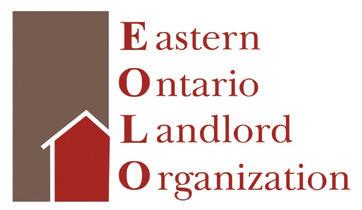
I am happy that I will be able to spend more time with my four young grandchildren, and to travel with my wife, Brenda, when we choose. I am also happy to be able to give more priority to City of Ottawa issues, especially at those times in the year when CFAA's issues demanded a lot of my time and effort. EOLO's members will still receive updates on federal issues, and on CFAA's work. This report addresses two practical issues at the City, which EOLO has been involved with from the time the issues came to Ottawa: solid waste and organic recycling in multi-residential buildings, and the Vacant Unit Tax.

Solid waste updates
Curbside solid waste
Curbside collection is provided for owneroccupied homes, small low-rise rental buildings, and some rowhouse complexes. In the last issue, EOLO reported on the three options City staff presented as ways to change the curbside collection rules to extend the life of the Trail Road landfill. The three options were:
• Partial Pay-As-You-Throw (Partial PAYT)
• A ban on the contents of solid waste enforced through requiring clear bags
• Reducing the garbage limit per household and enforcing the limit
On June 14, City Council approved a new policy to come into force in 2024, which will limit residents to three garbage items every two weeks.
• A garbage item can be a garbage bag, a 140-litre container or bulky item. Households can put several smaller bags in containers up to 140 litres.
• There will continue to be no limit to how much residents can set out through curbside recycling and green bins.
City staff will look into expanding the existing yellow bag program to permit owners of residential properties receiving curbside collection to purchase tags or bags for a small charge, and set out additional garbage items.
Multi-residential waste diversion strategy
City staff are working with EOLO, property owners, managers, and superintendents on the plan to bring green bins to all multi-residential properties. An update will be provided to Council this fall on the implementation of mandatory organics.
Over 160 properties have been onboarded to the green bin program in the last year. As of July 2023, 55,743 multi-residential units have access to green bin collection. City staff anticipate that the proactive onboarding approach will resume in or about September.
Before resuming the onboarding, City staff intend to meet with EOLO and the MR Working Group to share how industry feedback was incorporated into the plan and what the next steps will be.
In the meantime, Environmental Education Assistants (EEAs) have begun working with property managers and their residents to provide on-site door-to-door outreach, onboarding, and re-education about organic recycling at preidentified buildings and townhome complexes. The City service report stated residents living at a multi-residential property who are looking to start or refresh their green bin program can contact their property manager or visit Ottawa.ca/multires for details.
At this time, the information on the green bin program for apartments and multi-units within the website is out of date. A section below lists the topics and certain key information on other topics available at that website.
However, City staff provided an update to EOLO. The City has been conducting outreach at MR properties that already receive green bin collection. In the last month, more than 1,000 MR units were visited. Visual inspections by staff have noted an increase in organics diversion at those properties. This is an outreach pilot and the team is working on refining its approach to outreach and metrics for quantifying participation changes. City staff hope to have an update on this later this summer or in early fall.
rentalhousingbusiness.ca | 57
- John Dickie, Chair, Eastern Ontario Landlord Organization
If anyone is interested in hosting a green bin outreach session for their tenants at their property, you can email multires@ottawa.ca.
For Ferguslea’s successful approach to implementation, please see the article on pages 50-51 in the March/April 2022 issue of RHB Magazine at https://www.rentalhousingbusiness.ca/ archive/.
Solid Waste Master Plan (SWMP)
Over the last few months, the various Waste Plan actions have been analyzed to assess the potential impact of the plan, including changes to diversion, landfill life, and GHG emissions reduction. The plan will describe all these actions in detail and how they will help contribute to the plan’s vision, goals, and objectives. It will also present short- and longer-term targets for the entire plan and performance measures for some individual actions. The final financial analysis is also under way to assess the financial impact of all actions. That will also be brought forward to Council in October.
Following the presentation of the draft plan to Council in October, staff will engage with the public for the final round of consultation.
“Engagement Series 3” will ask for feedback on the draft SWMP before staff finalize and present it to Council in spring 2024.
What’s next?
This fall, City staff will convene a meeting of the Stakeholder Sounding Board to provide a review of the SWMP and the plans for engaging with the public during Engagement Series 3. City staff will also provide an update on the Waste Plan component projects and Individual Producer Responsibility.
Individual Producer Responsibility is the new province-wide system in which businesses that use packaging have to organize the pickup of the packaging, and pay for the pickup and disposal of the packaging. In each municipality, producers are organized into a collective body to do that efficiently. Any changes to how the black and blue box systems operate will be announced ahead of time. For now, those City systems are being rolled over to the new Producer waste handling bodies.
Topics addressed at Ottawa.ca/multires
For property owners, managers, and superintendents
• Green bin and leaf and yard waste
• Multi-residential stakeholder working group
Among other points, the Province has made a commitment to phase out food and organic waste from landfills by 2030
• Collection days
• Superintendent’s handbook
• Special waste items
• Damaged containers
• Free communication materials
• Tips and tricks
For residents and tenants
• Which bin to put it in?
• Electronic waste (or “e-waste”)
• Solid Waste Master Plan
Multi-Residential Waste Diversion Strategy
https://engage.ottawa.ca/multi-residential-waste-diversion-strategy

The project recommends five pillars to support increasing waste diversion at multiresidential properties:
• Expanding organics diversion to all multi-residential properties
• Enhancing promotion and education (P&E)
• Exploring pilots
• Dedicating and redesigning space for waste disposal programs
• Driving change moving forward through the collection contract
58 | August 2023
Vacant Unit Tax (VUT)
For properties in the residential tax class (i.e., with six units or fewer, but including all residential condominium units), VUT declarations were due in the spring. The first stage in the VUT appeal process is to file an online Notice of Complaint, now available on ottawa.ca/vut . The deadline for filing is September 15, 2023. The City will review Notices of Complaint, and send decisions by mail or email.
If a property owner disagrees with the decision from their Notice of Complaint, they have a second appeal available, namely a Request for Review. The form is also available online at ottawa.ca/vut . It must be filed within 90 days of the decision on the Notice of Complaint.
To complete any of the forms – Notice of Complaint, Request for Review, and VUT declaration – owners or property managers need the assessment roll number and the access code found on the previous VUT information notice or the final property tax bill. Owners registered with MyServiceOttawa can go directly to the forms from their property tax account.

Information about the VUT results to date
As per their previous direction, Ottawa City Council received a memo from City staff in June, providing figures on the status of the VUT. Table 1 shows highlights from the memo.
City staff expect appeals will reduce the figure of 6,104 for total vacant units somewhat, whereas audits will increase it somewhat. Table 2 shows details of the declared vacant units by type. City staff seem to want to proceed with the VUT. Councillors are less committed to the VUT, and they might be willing to overrule City staff. The usual left wing-centre-right wing division appears to apply to the VUT debate. The left wingers like the money the VUT may generate to fund affordable housing development, whereas the right wingers would prefer the City to leave people alone.
EOLO wants the VUT abolished. To achieve that, we will need to work with the councillors who oppose it, and the centrists, and make sure that we mobilize opposition at the right time.
BECOME AN EOLO MEMBER NOW!
EOLO invites Ottawa area landlords to join the organization. Have your interests and concerns heard, and benefit from EOLO’s support. As an EOLO member, you will be able to:

• Receive prompt emails of relevant City rule changes
• Attend two networking receptions a year
• Attend two free education events a year
• Receive all 6 annual issues of RHB Magazine with current developments, City and provincial funding programs, and landlord-tenant laws.
To apply for membership, go to www.eolo.ca, download the membership application form and send it to us at the contact info on that website.
rentalhousingbusiness.ca | 59
Status Number of units % of total affected units Notes Total units subject to the requirement to declare 336,865 Units declared vacant by the facts reported 3,268 0.97% Less than 1% Units deemed vacant for having filed no return 2,836 0.84 Less than 1% Total vacant units as of late May 6,104 1.83% Less than 2%
Table 1: High-level VUT summary
Total Declared vacant % vacant Single-family homes 169,249 891 0.53% Condos 67,319 1,065 1.58% Properties with more than 1 unit Rows/townhouses 55,903 612 1.09% Semi-detached 17,944 88 0.49% Duplexes 7,466 208 2.79% Triplexes 5,517 122 2.21% Quadplexes 3,028 87 2.87% Sub-total 89,858 1117 1.24% Other residential properties 10,439 195 1.87% TOTAL 336,865 3,268 0.97%
Table 2: VUT details by unit type
CFAA RENTAL HOUSING CONFERENCE 2024 TORONTO
The Canadian Federation of Apartment Associations invites you to join us next year in Toronto at CFAA-RHC 2024


May 14, 15 & 16, 2024
For more information visit cfaa-rhc.ca
2023 CFAA COMPENSATION & BENEFITS SURVEY
As we have done every second year for more than a decade, CFAA is producing the one and only Compensation & Benefits Survey focused exclusively on the rental housing industry in Canada For employers in rental housing, the CFAA Report will provide:
Pay averages and ranges for 9 Property positions
Pay averages and ranges for 20 Head Office positions
Health benefits and employment trends

National, regional and City specific information
The property positions include building superintendent (resident manager), cleaner, doorman (concierge), leasing agent, maintenance technician, property administrator, property assistant manager, property manager and security guard
If you are interested in buying the compensation survey for the areas in which you operate, e-mail awai@3rdquartile.com for pricing and an order form. (3rd Quartile is the compensation firm producing the compensation survey.)
CEO’S MESSAGE
Since my last message to you in March of this year, we’ve been working hard on behalf of our members to deliver education, advocate for our industry, and improve our operations.
Saskatchewan’s rental housing industry is what our members describe as “on fire,” but in a good way. With a 7 per cent increase in immigration reported by the Government of Saskatchewan, there is strong demand across our major cities, which is putting upward pressure on rental rates. Although rent increases can be uncomfortable for tenants and rental housing providers, Saskatchewan has some of the most affordable rents in the country and these rent increases will be reinvested in existing and new rental properties.
With decreasing affordability in home ownership and rising rental rates, low-income families and individuals are increasingly at risk of being evicted into homelessness. Provincial and federal governments will need to provide sufficient and consistent housing benefits that renters can afford and rent the housing that they need. To support low-income renters, we will continue to fight for amendments to the Saskatchewan Income Support Program, especially direct payment of rent to rental housing providers.
If you or a colleague need assistance on rental housing matters, please call our office and we’d be happy to help.
Thank you to our members for their continued support. We are much stronger when we are united together as a team.
- Cameron Choquette, CEO
Events at a glance
Conference 2023, presented by The Home Depot
Together with the Home Depot, Yardi, and a number of other corporate partners, we can’t wait to host rental housing providers and stakeholders for our annual conference on September 27–28 in Saskatoon. We’ve already confirmed speakers who will be presenting on mortgage interest rates, leasing strategies, emotional support animals, and much more! You can register for the whole conference or just come for the education day on September 28. In addition to a number of impactful speakers, we will also be celebrating the excellence and professionalism of our industry at the 2023 Rental Housing Awards luncheon, presented by Yardi.
Be sure to visit our website for all of the details on Conference 2023 and how you can participate.
Annual General Meeting
We were thrilled to welcome Gavin Little and Carla Browne as new Directors at the association’s AGM held on June 19. We approved the financial reports, appointed our financial reviewer, and reviewed our annual report for 2022-23.

We continue to see membership growth, and are working hard to streamline our strategy to better serve our members.
After concluding a term of more than two years as our Board Chair, Ramona Maraj moved into her new role as Past Chair of the Board. Sheena Keslick has since been appointed as Chair and Louise Elsey has been appointed as Vice Chair. We’d like to thank them for their leadership and dedication to the association and our industry.
rentalhousingbusiness.ca | 61
Cameron Choquette, CEO
CFAA Rental Housing Conference
Sheena, Cam, and Past Chair Ramona
Maraj also attended the Canadian Federation of Apartment Association’s annual rental housing conference, CFAA-RHC, which took place in Halifax, also in June.


The conference featured outstanding speakers, a lot of networking opportunities, and the chance to explore the beautiful city of Halifax. Many rental housing providers shared similar challenges to the ones we are facing here in Saskatchewan, but we have the benefit of no rent control and much less government regulation.
At the conference, CFAA leaders reported on the two main views of the reasons rents are rising across Canada. The issues are described in detail in the CFAA article, which begins on page 35. That article also sets out links readers can use to access CFAA’s work and the testimony given at the House of Commons HUMA Committee, which will issue a report on rental housing in the Fall. Next year’s CFAA RHC will be held in Toronto, on May 14, 15 and 16. Attendees can expect to hear updates on Canada’s rental issues, including important political updates, operational topics, marketing and leasing, and many more.

Apartmentalize in Atlanta, GA
Our incoming Board Chair, Sheena Keslick, and CEO Cameron Choquette attended the National Apartment Association’s annual conference, Apartmentalize, which took place in Atlanta in June, which hosted over 10,000 attendees. Both Sheena and Cam learned about rental operations, low-income housing options, pet screening, and much more.
Apartmentalize is held in June each year. Through CFAA and SKLA, Saskatchewan rental housing providers can attend the whole conference for the NAA member rate. If you want to attend in future years, check in with us for the discount code to get that registration rate.
Advocacy
As the association representing rental housing providers in Saskatchewan, our relationships with public servants and elected officials remain strong. We are monitoring a number of important files that impact the rental housing industry. Recent advocacy work is described on the next page.
62 | August 2023
Office of Residential Tenancies
In late July, we submitted a letter to the Minister of Justice that outlined our concerns relating to the Office of Residential Tenancies, saying: “Ensuring that the ORT has the monetary resources to recruit and appoint hearing officers must be a priority for the Ministry of Justice. The rental housing industry depends on the ORT for the efficient and fair administration of justice between rental housing providers and tenants.” We will be meeting with Minister Eyre in September and look forward to providing an update on the delays being experienced at the ORT.
Contact with other members of CFAA gives us some insight into how bad hearing delays can get and how much negative impact that has on rental housing providers. Small-scale landlords are particularly hard hit by delays, but they are bad for all rental providers. Hearing delays are also bad for tenants because if they have experienced a financial problem, they need to adjust for it quickly, rather than built up a debt they can never clear. As well, if the problem is behavioural then delays mean a disruptive tenant interferes with other tenants longer, which is unfair to them.
Court of King’s Bench
We were made aware of significant delays in the scheduling of appeals at the Court of King’s Bench, which we promptly responded to through the Court’s Registrar. We’ve been in communication with the Registrar and the Chief Justice to ensure that appeals are scheduled promptly so both tenants and rental housing providers can access the justice they need.
Rental scams
Together with the Saskatchewan REALTORS Association and the Better Business Bureau
of Saskatchewan, we warned the public about the recent increase in rental scams. We caution tenants to ensure they take the time to know who they are dealing with and never send money to someone who says they are a rental housing provider until they have viewed the property and signed a tenancy agreement.

Housing Accelerator Fund
The federal government’s Housing Accelerator Fund is designed to support municipalities in approving more housing faster, and supporting denser housing, and more affordable housing. Given the availability of land in Saskatchewan, greater density is not a key issue, but faster approvals would make rental supply more available.
In turn, a responsive rental supply takes away the political pressure that sometimes arises to impose rent control. Along with Alberta, New Brunswick, and Newfoundland, Saskatchewan does not have rent control. As described in detail in the article beginning on page 35, CFAA is working hard to preserve provincial control over rent control to avoid its coming to Saskatchewan. CEO Cameron Choquette is working with CFAA to provide the Saskatchewan perspective on upcoming housing issues at the federal level.
We were pleased to work with the City of Saskatoon in brainstorming initiatives for their application to the federal government’s Housing Accelerator Fund. We pushed for faster permit times, prioritizing multi-family rentals for development approval, and reducing red tape for the renovation and legalization of existing suites. All of those measures will keep the rental supply responsive to changes in rental demand, which will help us stay free from the scourge of rent control, which applies in six of the ten provinces, including the three with the largest populations and number of rental providers.
As the voice of landlords in Saskatchewan, we deliver knowledge, promote best practices, and advocate for a healthy and resilient rental housing industry. We are the leading community of industry professionals who are proud to provide safe, high-quality rental homes for the people of Saskatchewan.
We work to ensure Saskatchewan’s rental housing industry meets the needs of renters, owners, and managers. Our team is dedicating to serving our members in any way that we can.
Cameron Choquette, Chief Executive Officer #17-102 Cope Cr, Saskatoon, SK S7T 0X2 eo@skla.ca
rentalhousingbusiness.ca | 63
Final Take Away Final Take Away
Tips for centralization and automation
By Peter Altobelli, Vice President, Yardi Canada Ltd.
Brought to you by Yardi Canada Ltd
Being in the service industry can be a challenging experience, but employee turnover is almost more costly than resident turnover. According to a 2021 Statistics Canada report on businesses, the labour shortage is expected to impact over one third of the industry, and retaining skilled workers will affect over one quarter. Rudimentary routines can intensify feelings of burnout, so property management companies that embrace technology to make work easier and more efficient will have a better chance of retaining their employees. Allowing your staff to showcase their unique skills and creativity will increase the likelihood of them staying and developing their careers in your organization.
Shift away from property-centric work models
Digitizing your business processes can be an overwhelming undertaking. However, by implementing a phased automation strategy and involving your staff throughout the process, your experience can be energizing. Start by identifying what technology has worked to your advantage at the property level. Then, working with your software provider, determine how you can leverage that for similar high-volume, low-value tasks. Your approach should focus on centralization based on specialization, meaning teams that manage leads, resident services, maintenance, collections, and accounting. It is also pertinent to consider all-in-one property management software; fewer platforms result in more accurate data and less training for employees.
By creating synergies across roles, you eliminate redundancies so employees can prioritize more meaningful interactions. This includes building connections with residents and working higher quality leads.
Evaluate marketing
Maintaining your online presence is critical but can be one of the most tedious aspects of your business. Internet listing services (ILS) and websites are designed to help you meet your customers where they search online. Fortunately, software features like automated listing syndication can help your team enter property and unit data into your property management system once and automatically update the information across dozens of online rental websites in real time. This includes details such as rental pricing, availability, amenities, office hours, and more. The time saved from avoiding having to do multiple entries enables staff to provide more tailored and personalized experiences for your current and future tenants.
Elevate leasing
With a growing Canadian population and a limited housing supply, an online customer relationship
management (CRM) platform is your best choice for consolidating communication interactions, prioritizing follow-up activities based on specific roles, and offering remote work opportunities for leasing agents. The ideal CRM not only gives you full visibility into productivity levels, it also provides select staff access to applicant and resident histories across your communities. This is a useful feature for new or part-time workers, and does not break the bank.
You can further expand your lead nurturing possibilities by utilizing a solution that accepts electronic applications, screens tenants, and services residents on one platform.
Engage operations
Unless you make yourself available around the clock, 365 days a year, maintenance requests might be left unattended. This could result in expensive repairs, dissatisfied residents or property damage. To gain peace of mind, offer your residents a mobile app where they can conveniently and securely submit and review maintenance requests at any time. In instances where you need to be reached immediately, an allhours maintenance call centre provides a worryfree solution that follows your set budget and can be turned on at any time. At the end of each day, site staff are always kept well informed.
Streamline routines, humanize exceptions
Automation done right leads to effective centralization and growth opportunities. To accomplish this, it requires effort from everyone within your organization to ensure the automated processes are running smoothly and accurately across all your properties. With time, your employees and stakeholders will see improvements throughout the lead-to-lease life cycle. Your objectives can be quickly met when your tools are secure, intuitive, scalable, and fully integrated.
To learn more about your technology options, visit YardiBreeze.ca.
64 | August 2023




www.acegroupgta.ca 416-285-5388 GTA’S OLDEST AND MOST RELIABLE GENERAL CONTRACTOR CRANFIELD GENERAL CONTRACTING V&E CLEANING ACE PAINTING































































 By David Gargaro
By David Gargaro













 By Marc Côté
By Marc Côté








 FRPO
FRPO






























































































